8 augmented-reality PhD scholarships
Filtered by.
- Scholarship
- augmented-reality

Refine Your Search
- Netherlands 3
- United Kingdom 3
- Australia 1
- ; Heriot-Watt University 2
- Delft University of Technology 2
- ; Innovation Acts Ltd. 1
- ; University of Exeter 1
- Eindhoven University of Technology 1
- University of Adelaide 1
- Computer Science 4
- Medical Sciences 2
- Arts and Literature 1
- Humanities 1
EPSRC PhD Studentship: Immersive Augmented Reality (AR) Experience Design to Improve Mental Health and Reduce Depression for NHS Staff and Patients
“Immersive Augmented Reality (AR) experience design to improve mental health and reduce depression for NHS staff and patients”. Summary of project This proposed research focuses on how augmented reality (AR
EPSRC PhD Studentship: Immersive Augmented Reality (AR) experience design to improve mental health and reduce depression for NHS staff and patients
Phd position technology entrepreneurship.
Entrepreneurship with a focus on Immersive Virtual and Augmented Technology and Additive Manufacturing (3D Printing). The Delft Centre for Entrepreneurship, in the Faculty of Technology, Policy, and Management
PhD on Preserving Human Capabilities & Extending Well-Being
of which significantly change during senescence. Cutting-edge augmentation technologies have the potential to replace or improve many deteriorating capabilities, enabling us to maintain physical
PhD Opportunity: Metaverse and Responsible Business Models
. Background or experience in scientific or technological aspects of metaverse related technologies (e.g., Virtual Reality , Augmented Reality , Mixed Reality , blockchain, Artificial Intelligence, Big Data
PhD Studentship: IMPACT-RISE: Infrastructural Surrogate Modelling Using Physics-informed and Interpretable Machine Learning for Community Resiliency and Sustainability Evaluation
infrastructural and hazard related data sets, ranging from historical incident records to real-time infrastructural sensor data, community maps, and more. Furthermore, the project requires augmentation of real
PhD Networks of Care: The Architecture of Future Healthcare Environments
medical technology and patient care practices? What role can virtual and augmented reality play in the future design of healthcare facilities, and how might these technologies influence patient and staff
IVAI PhD internship scholarship
, and deployment of artificial intelligence, machine learning, virtual/ augmented reality , and data analytics technologies. IVAI is currently working on research projects related to applications in Cyber
Searches related to augmented reality
- virtual reality
- postdoctoral
- computer science
- computer vision
- human computer interaction
- game design
- phd in sustainibility energy efficiency
Search Rochester.edu
- Graduate Program
Augmented and Virtual Reality
Our NSF-funded program on Interdisciplinary Graduate Training in the Science, Technology, and Applications of Augmented and Virtual Reality (AR/VR) is a structured, multi-disciplinary PhD training program on AR/VR. This NSF Research Traineeship (NRT) program admits PhD students from multiple University of Rochester departments including:
- Biomedical engineering
- Brain and cognitive sciences
- Computer science
- Electrical and computer engineering
- Neuroscience
Students admitted to the program take three new innovative courses and benefit from a variety of professional development mechanisms, including industry internships and immersive professional development encounters with industry leaders.
In addition students will also work on innovative, interdisciplinary research projects that focus on:
- AR/VR platforms and computation
- Perceptual-cognitive aspects of AR/VR design
- Machine intelligence for AR/VR systems
- AR/VR interfaces and applications
Upon completion of the training program requirements, students receive a certificate.
The program also offers one-year fully-funded fellowships to a subset of the trainees enrolled in the program. The funded fellowships can be offered to US citizens and permanent residents only.
Both funded and non-funded trainees are expected to complete all program requirements to receive a certificate.
Graduate students who do not enroll can still benefit from courses and other activities offered as part of this program.
See the PhD Training Program in Augmented and Virtual Reality page for program information and application requirements.
Virtual Reality and Augmented Reality
Get your brochure.
By clicking the button below, you agree to receive communications via Email/Call/WhatsApp/SMS from MIT xPRO & Emeritus about this program and other relevant programs. Privacy Policy
Be The Pioneer: Immerse Yourself in the Fundamentals of Augmented Reality (AR), Virtual Reality (VR), and Mixed Reality (MR)
The benefits associated with XR technologies for industry and for society are too great to ignore. Imagination and technology combine to create mixed reality experiences that change the way we communicate, learn, play, and work. Over the next decade, every industry will adopt aspects from this suite of immersive technologies — notably retail/ecommerce, education, IT, entertainment, manufacturing, and healthcare. Now it’s your turn.
The Virtual Reality and Augmented Reality program from MIT xPRO provides a foundational understanding and conversational fluency in the principles of XR technologies, an umbrella term that includes AR, VR, and MR. Over the course of eight weeks, you will:
Acquire the essential vocabulary and knowledge of XR concepts to communicate meaningfully with different stakeholders.
Gain introductory practical experience with XR system development and better understand how to generate XR system development ideas and communicate with developers.
Expand your knowledge of XR system elements, including design principles, approaches, and processes, taking into account users’ needs and values.
Apply XR concepts and design principles to create a high-fidelity XR prototype.
Ensure your technologies are inclusive and designed to promote social good.
Explore the broader implications of XR technologies, including the new opportunities they provide, enabling you to make recommendations to stakeholders, clients, and other key audiences.
Drawing on faculty expertise, case studies, and peer interactions, you will develop a deeper understanding of XR system elements, including design principles, approaches, and processes, learning to consider users’ needs and values in XR design to create XR prototypes.
Who Is This Program For?
This eight-week program is ideal for seasoned professionals who want to expand their capabilities and explore the rapidly growing field of XR technologies.
Design Professionals: UX, UI, and XR designers seeking to expand their capabilities to include a technical understanding of how to integrate visual design elements, user needs, values, and considerations of social impact into the design and development of XR systems for their organization or client.
Developers: Unity developers, app developers, and 3D developers focused on VR/AR apps and experiences seeking to expand their technical knowledge of XR technologies and understand their wide range of practical applications and unique development requirements.
Technology Adopters: Professionals who are interested in the application of XR technologies to improve the customer experience and/or to reduce costs, time to market, and learning curves.
Prior knowledge of Unity, C++, and C# programming languages are helpful, but not mandatory.
*Participants must be 18 or above to apply for this program.
Key Takeaways
Over the course of this eight-week program, you will learn the principles of designing effective and engaging XR experiences that are inclusive and promote social good. Specifically, you will:
Gain introductory and practical experience with XR system development to better understand how to generate XR system development ideas and communicate with developers.
Expand your knowledge of XR system elements, including design principles, approaches, and processes, considering user needs and values.
Ensure that your technologies are inclusive and designed to promote social good.
Explore the broader implications of XR technologies, including the new opportunities they provide, to make recommendations to stakeholders, clients, and other key audiences.
Program Topics
Program highlights.
Explore applications for different immersive technologies with an industry thought leader, MIT Professor and Director of the MIT Center for Advanced Virtuality, D. Fox Harrell.
Get access to exclusive interviews with industry pioneers in digital storytelling, UX design, multimedia art, and product innovation.
Gain practical experience by defining, visualizing, and pitching your XR game concept, punctuated by building a prototype.
Learn to apply the principles of AR and VR with Unity and Qlone.
Accelerate your professional development through personalized feedback, active support, and network development.
Participate in live weekly office hours with learning facilitators.
Earn a verified digital certificate and four Continuing Education Units (CEUs) from MIT xPRO.
System and Applications Requirements
To experience VR apps, you will need to purchase a VR headset, such as a Merge VR Headset or Google Cardboard VR Headset (compatible with most iOS and Android smartphones. Preferred; phones from 123mm to 156mm).
To experience VR/AR apps, your mobile phone must have an iPhone Operating System 11 or latest (iOS) or Android Operating System (OS) Oreo or latest; with a camera.
Other headsets that may be used to experience VR/AR include HTC Vive, Oculus Go, Meta Quest, Sony PlayStation VR, and BOBOVR.
In addition, as you progress through the program, you will need to install trial and/or free software required for making XR components, such as Unity Personal and Qlone. For example, to view the 360-degree prototypes you will make in Module 3, you will need to download the VR Media Player for Android or the VR Player for iPhone users.
Program Faculty

Professor of Digital Media & Artificial Intelligence, Comparative Studies Program and Computer Science and Artificial Intelligence Laboratory (CSAIL); Director of the MIT Center for Advanced Virtuality
Professor D. Fox Harrell’s research focuses on pioneering new forms of computational media, such as interactive narrative technologies, virtual and augmented reality systems, ...
Guest Speakers

Co-Founder and Producer, Atlas V
Antoine is a French producer with 15 years of experience creating immersive works, transmedia documentaries, short films, music videos, and high-end commercials. His company s...

Director of Product and Innovation at Arrow Electronics | Digital SaaS; Research Affiliate at MIT
An inventor, engineer, and entrepreneur at heart, Vik desires to positively change how we interact using technology. He leads engineering teams through the full product journe...

Former Head of Digital Experiences, wow
Allison Crank is a UX designer and researcher exploring the intersection of art, technology, and architecture. Currently, she works as a freelance UX designer for video games ...

Documentary Media Artist and Fulbright Research Fellow, Seoul Institute of the Arts
Andrea is an interdisciplinary researcher and multimedia artist based in Los Angeles. Her work explores avatar embodiment, virtual idols, and cultural theory, with a focus on ...
Featured Learner Testimonials
About mit xpro.
MIT xPRO's online learning programs leverage vetted content from world-renowned experts to make learning accessible anytime, anywhere. Designed using cutting-edge research in the neuroscience of learning, MIT xPRO programs are helping professionals build their skills on the job. To explore the full catalog of MIT xPRO courses and programs, visit xpro.mit.edu .
About the MIT Center for Advanced Virtuality
The MIT Center for Advanced Virtuality pioneers innovative experiences using technologies of virtuality. Such technologies, ranging from Virtual Reality (VR) to Cinematic Reality (CR) and beyond, all use computing to construct imaginative experiences that overlay our physical world. It is important to create and deploy such technologies effectively as they are now used every day to communicate, express, learn, play, and work. Professor Harrell is Director of the Center for Advanced Virtuality and faculty director of the MIT Center for Advanced Virtuality.
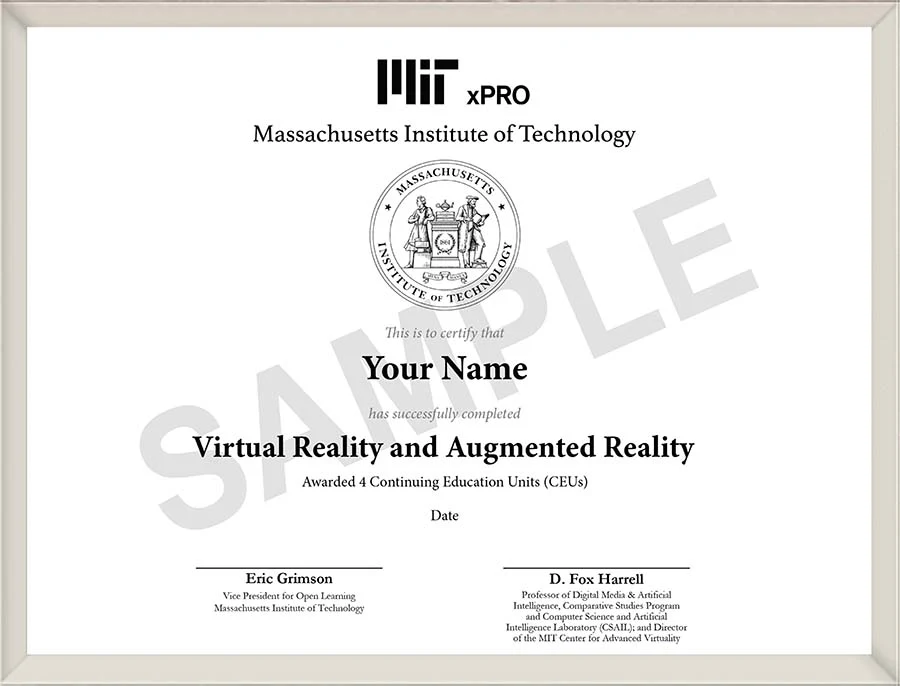
Certificate
Get recognized. Upon successful completion of this program, MIT xPRO grants a certificate of completion to participants and four Continuing Education Units (CEUs). This program is graded as a pass or fail; participants must receive 75% to pass and obtain the certificate of completion.
Note: After successful completion of the program, your verified digital certificate will be emailed, at no additional cost, in the name you used when registering for the program. All certificate images are for illustrative purposes only and may be subject to change at the discretion of MIT.
Registration for this program is done through Emeritus. You can contact us at [email protected]
Financing Options
Climb Credit*
We offer financing options with our partner, Climb Credit*. Click here to learn more .
*Applicable for US Residents
Flexible Payment Options For All
Flexible payment options allow you to pay the program fee in installments. Click here to see payment schedule .
Didn't find what you were looking for? Write to us at [email protected] or Schedule a call with one of our Program Advisors or call us at +1 401 443 9591 (US) / + 44 189 236 2347 (UK) / +65 3129 7174 (SG)
Early Registrations Are Encouraged. Seats Fill Up Quickly!
Flexible payment options available. View payment plans

Electrical Engineering (Media Arts and Sciences), PhD
- Program description
- At a glance
- Degree requirements
- Admission requirements
- Tuition information
- Career opportunities
- Contact information
approved for STEM-OPT extension, audio, enggradee, models, motion
This program's name has changed effective Fall 2024. The previous name was Electrical Engineering (Arts, Media and Engineering).
This concentration in media arts and sciences is a collaboration between the electrical engineering program at ASU and the Herberger Institute for Design and the Arts, and it is available to MS and PhD students admitted to this program.
Students take two-thirds of their coursework from the electrical engineering program and one-third from the media arts and sciences program.
Electrical engineering students in the media arts and sciences concentration undergo training toward integrating principles of digital signal processing, pattern recognition, computer vision, and multimedia computing with transdisciplinary objectives, with the goal of enabling new paradigms of human-machine experience that directly address societal needs and facilitate knowledge. Examples include media-based intelligent systems for health care and well-being, as well as promotion of environmentally sustainable practices. For more information on current research projects and initiatives, students should visit the school's research page .
This program may be eligible for an Optional Practical Training extension for up to 24 months. This OPT work authorization term may help international students gain skills and experience in the U.S. Those interested in an OPT extension should review ASU degrees that qualify for the STEM-OPT extension at ASU's International Students and Scholars Center website.
The OPT extension only applies to students on an F-1 visa and does not apply to students completing a degree through ASU Online.
- College/school: Ira A. Fulton Schools of Engineering
- Location: Tempe
84 credit hours, a written comprehensive exam, an oral comprehensive exam, a prospectus and a dissertation
The program requires the following:
- a comprehensive examination
- the dissertation defense
- a qualifying examination
- 10 courses, typically seven from EEE and three from AME
- 12 credit hours of dissertation, typically eight credits from EEE and four from AME
- 12 credit hours of research, typically eight credits from EEE and four from AME
Applicants must fulfill the requirements of both the Graduate College and the Ira A. Fulton Schools of Engineering.
Applicants are eligible to apply to the program if they have earned a bachelor's or master's degree from a regionally accredited institution.
Applicants with a master's degree who wish to be considered for the doctoral program must have a minimum GPA of 3.50 (scale is 4.00 = "A") in their master's degree program. Applicants without a master's degree must have a minimum GPA of 3.60 (scale is 4.00 = "A") in the last two years of undergraduate coursework and have graduated from an ABET-accredited undergraduate program.
All applicants must submit:
- graduate admission application and application fee
- official transcripts
- statement of purpose
- curriculum vitae
- three letters of recommendation
- proof of English proficiency
Additional Application Information An applicant whose native language is not English must provide proof of English proficiency regardless of their current residency.
International students seeking teaching assistantships must demonstrate proficiency in spoken English by scoring at least 26 on the speaking portion of the TOEFL iBT or 50 on the ASU-administered Speaking Proficiency English Assessment Kit.
Applicants should submit materials that reflect the transdisciplinary nature of the arts and engineering degree, including a statement of purpose and curriculum vitae demonstrating interest and relevant experience in the area. Applicants will have the opportunity to upload their curriculum vitae and statement of purpose when completing the online application. Additionally, the media arts and sciences program requires three letters of recommendation from individuals familiar with the applicant's ability to succeed in a transdisciplinary research environment.
Media arts and sciences graduates are able to generate and apply new ideas, theories and systems related to the intersection of media arts and electrical engineering. The transdisciplinary nature of this program allows them to connect electrical engineering signals and systems constructs to multimedia computing, digital communication, immersive augmented reality and virtual reality experiences and data visualization.
Career examples include:
- augmented and virtual reality researcher
- computer systems engineer
- electrical engineering professor
- systems software engineer
Electrical Engineering Program | GWC 209 [email protected] 480-965-3424


- Types of Jobs
Find the right school for you
Error message, top 25 public augmented/virtual reality (ar/vr) schools in the u.s. – 2021 college rankings.
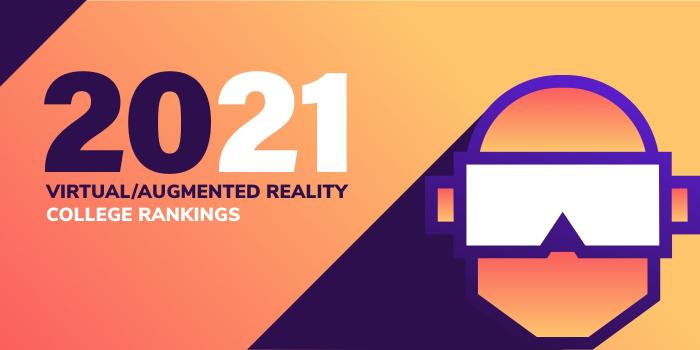
What are the top public AR/VR schools and colleges in the U.S. for 2021?
| Ranking | School | State |
|---|---|---|
| 1 | University of Washington | Washington |
| 2 | University of Maryland | Maryland |
| 3 | University of North Carolina at Chapel Hill | North Carolina |
| 4 | Georgia Institute of Technology | Georgia |
| 5 | Texas A&M University at College Station | Texas |
| 6 | University of California, San Diego | California |
| 7 | University of Utah | Utah |
| 8 | University of California, Berkeley | California |
| 9 | University of Michigan | Michigan |
| 10 | University of Illinois at Chicago | Illinois |
| 11 | Iowa State University | Iowa |
| 12 | North Carolina State University | North Carolina |
| 13 | University of Central Florida | Florida |
| 14 | Pennsylvania State University at Behrend | Pennsylvania |
| 15 | University of Arizona | Arizona |
| 16 | University of Florida | Florida |
| 17 | University of Illinois at Urbana Champaign | Illinois |
| 18 | University of California, Santa Cruz | California |
| 19 | Ohio University | Ohio |
| 20 | Purdue University | Indiana |
| 21 | The Ohio State University | Ohio |
| 22 | Rowan University | New Jersey |
| 23 | Wright State University | Ohio |
| 24 | University of Colorado Boulder | Colorado |
| 25 | University of Nebraska-Lincoln | Nebraska |
Our 2021 list -our first annual- of the Top 25 Public Augmented/Virtual Reality (AR/VR) School Programs in the US.
For an explanation of ranking criteria, click here .

University of Washington (UW) educates more than 54,000 students annually. Founded in 1861, UW is one of the oldest universities on the West Coast. The school, which has three campuses in Seattle, Bothell, and Tacoma, houses 18 colleges and schools, including the College of Arts and Sciences, home of the Paul G. Allen School of Computer Science & Engineering.
The Allen School, which introduced the world’s first augmented reality capstone course in 2016, offers a BS in Computer Science (CS), a Combined BS/MS in CS also known as the Fifth Year Master’s Program, a Professional Master’s (PMP) in CS, and a PhD in CS. The BS/MS enables current and recent Allen School undergraduate majors to earn both degrees in approximately five years. All programs benefit from the Allen School’s research and innovation in AR/VR as well as Artificial Intelligence (AI), Human Computer Interaction & Accessible Technology, Machine Learning, Robotics, Computer Graphics, Vision, Animation & Game Science, and Ubiquitous Computing.
Course highlights include Advanced Topics in Human-Computer Interaction-HCI (Graphics & Virtual Reality), Artificial Intelligence (AI) I & II, AI-based Mobile Robotics, Computer Systems Architecture, Computational Fabrication, Interaction Programming, Advanced Topics in Digital Animation, Computational Complexity, Interactive Learning, and Neural Control of Movement: A Computational Perspective.
Students in all programs have the opportunity to work with an interdisciplinary team of faculty and peers in the UW Reality Lab . Launched in 2018 and housed in the Allen School, the Lab includes the Reality Studio, Reality Lab Incubator, and classes. In addition to advancing AR/VR research, Lab participants will work on projects in 3D computer vision and perception, object recognition, graphics, game science and education, distributed computing, stream processing, databases and computer architecture, and privacy and security.
Allen School CS graduates go on to work in the Arts, Education, Law, and many other areas.

The University of Maryland (UMD) is the flagship institution of the University System of Maryland (USM), which consists of 12 institutions, three regional centers, and one system office. Established in 1856, UMD serves just over 40,700 students enrolled in 300+ academic programs in more than a dozen colleges and schools. Programs for aspiring AR/VR professionals are offered in the Colleges of Arts and Humanities (ARHU) and Computer, Mathematical and Natural Sciences (CMNS). Options include a BA or BS in Immersive Media Design and BS, MS, BS/MS, and PhD degrees in Computer Science with an AR/VR focus.
Immersive Media Design (IMD) students will learn to “code, create and collaborate using the latest digital tools and technologies,” says the school. Students may focus in Art or Computer Science to graduate with a BA from the College of ARHU or a BS from College of CMNS.
Housed in the Brendan Iribe Center for Computer Science and Engineering, the College of CMNS, Department of Computer Science, serves more than 3,400 students “with interests ranging from systems to programming languages, from algorithms to design and from VR to Robotics.” Department highlights include research opportunities, study abroad experiences, internships, and participation in the honors program.
Students in all programs have access to the UMD Graphics and Visual Informatics Laboratory (GVIL), and the Mixed/Augmented/Virtual Reality Innovation Center (MAVRIC).
Established in 2000 by the Department of Computer Science, the GVIL promotes “research and education in computer graphics, scientific visualization, and virtual environments . ” Current projects include “several driving applications for next-generation virtual and augmented reality, including augmented navigation, medical training, virtual manufacturing, and immersive education.”
MAVRIC was created to support the future of XR, foster XR talent, and connect developers, entrepreneurs, innovators, and researchers through events, workshops, and programs.
UMD also houses the Maryland Blended Reality Center (MBRC)— a multidisciplinary partnership that joins computing experts at the University of Maryland with medical professionals at the University of Maryland, Baltimore (UMB). Launched in 2017, MBRC’s mission is to “advance visual computing tools—many of them based in immersive technologies like virtual, augmented and mixed reality—that can be used for emergency medicine, health care and innovative educational and training modules.”
Graduates of the Computer Science, Immersive Media Design, and other programs go on to “earn competitive jobs,” in tech industries or federal laboratories. Some “join professions such as medicine, teaching, and law.”
Notable alumni include Sergey Brin, Co-founder of Google; Gary Flake, a Microsoft Distinguished Engineer and founder of Yahoo! Research Labs; and Naresh Gupta, Senior Vice President of Adobe’s Print and Publishing Business Unit.

Established in 1789, University of North Carolina at Chapel Hill (UNC-Chapel Hill) is the only public university in the U.S. to award degrees in 18th century. The school offers 74 bachelors, 104 masters, 65 doctorate, and seven professional degree programs through 14 schools. A member of the UNC System (16 universities), UNC-Chapel Hill serves around 30,100 students.
Program options for AR/VR students are housed in the College of Arts and Sciences, Department of Computer Science. Established in 1964, the Department was one of the first independent computer science departments in the U.S.
Pathways include BS and MS degrees in Computer Science with a Computer Graphics or HCI Research Area. Computer Graphics subareas include Animation & Simulation, Virtual Environments, and Visualization. HCI offers a Virtual Environments subarea. A PhD in Computer Science is also available.
Department course highlights include 2D Computer Graphics, Connecting Language to Vision and Robotics, Digital Culture, Digital Logic and Computer Design, Human Robot Interaction, Machine Learning, Models of Languages & Computation, Scientific Programming, and Software Engineering Laboratory.
Students in all programs have access the Graphics, Imaging, and Robotics Lab and the Graphics and 3D Vision Laboratory. The Graphics, Imaging, and Robotics Lab is a 3,500 sq. ft. space located in J. Carlyle Sitterson Hall. Most of the Lab is dedicated to work in effective virtual environments. The remaining area, which houses a variety of robots, focuses on robotics research.
Housed in the Frederick P. Brooks Jr. Computer Science Building and Sitterson Hall, the new Graphics and 3D Vision Laboratory is situated in a noise-controlled, 2,500 sq. ft. space divided into three research zones by floor-to-ceiling blackout curtains for light and sound suppression. Zones include Projective Display Research, Computer Vision and Optical Tracking Research, and Physical Simulation and Audio Synthesis Research with a focus on GPU processing. The space has “11-foot ceilings and a Unistrut mounting grid to mount hardware as needed.”
Other facilities include “specialized research laboratories for graphics and image processing, computer building and design, and collaborative, distributed, and parallel systems.” Past and present projects and groups include the Ultrasound/Medical Augmented Reality Group, Effective Virtual Environments Project, Geometric Algorithms for Modeling, Motion, and Animation Group (GAMMA) Project, and the Walkthrough Group (simulated walkthroughs of architectural models).
UNC-Chapel Hill graduates work in a range of industries, in companies ranging from small start-up operations to government laboratories and large research and development corporations.
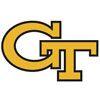
Georgia Institute of Technology (Georgia Tech) has campuses in Atlanta, Georgia; Metz, France; and Shenzhen, China. The school opened as the Georgia School of Technology in October 1888 with just 84 students. Today, Georgia Tech serves nearly 40,000 students from 50 states and 149 countries.
Majors and degrees are offered through the colleges of Design, Computing, Engineering, and Sciences, the Scheller College of Business, and the Ivan Allen College of Liberal Arts. Programs for AR/VR students are offered in the Ivan College of Liberal Arts, School of Literature, Media, and Communication, and the College of Computing, Schools of Computer Science, Interactive Computing, and Computational Science & Engineering. Options include a BS in Computational Media, MS and PhD degrees in Computer Science, and Minors in Computing & Devices, Computing & Intelligence, and Computing & People, to name a few.
With 300 students, the BS in Computational Media is one of Georgia Tech’s fastest growing programs. Students have opportunities to focus in Interaction, Games, Narrative, and more. Course highlights include Constructing the Moving Image, Interaction Design, Computer Animation, and Experimental Media. Sample careers include Virtual and Augmented Reality, Special Effects Creation, Interactive Game Design and Simulation, Robotics, and Animation.
The Computer Science programs at Georgia Tech provide opportunities for students to select from research areas such Virtual & Augmented Environments, Ubicomp & Wearable Computing, AI and Machine Learning, Robotics and Perception, and Geometry, Graphics, and Animation.
Students in all programs have access to Georgia Techs GVU Center , which supports AI, AR/VR, HCI, Robotics, Wearable Computing and other research. Within the GVU Center is the Augmented Environments Lab , which focuses on “understanding how to build interactive computing environments that directly augment a user's senses with computer-generated material,” says the school.
Also located in the GVU Center is the Prototyping eNarrative Lab . Also known as PeN Lab , the Lab “applies digital information design and interaction design principles to digital storytelling to create more complex and expressive narratives, focusing on emerging platforms like experimental television, virtual reality, and augmented reality, and on the intersection of storytelling with game design and simulation design.”
Sample Lab projects include Bringing Interactivity to Static Data Visualizations through Augmented Reality , Escape Room VR , Interaction Techniques for Children's AR Education , Invisible Cities: Multi-user AR Public Monuments , The Lights of St. Etienne: An AR/MR Experience in the Cathedral in Metz, France , WebXR: Experiences in AR and VR for the Web , and Pipping: Exploring Passive Haptics in Virtual Reality .
Georgia Tech graduates can be found working in leadership positions in consulting, engineering, financial services, healthcare, law, manufacturing, retailing, transportation, humanitarian logistics, and more. They have been hired by companies such as Apple, Boeing, Cisco Systems, Delta Airlines, Disney, Google, IBM, Intel, Microsoft, Tesla, and many others.

Texas A&M University at College Station (TAMU or Texas A&M) was established in 1876 as the state's first public institution of higher learning. Today, the school is a research-intensive, flagship university consists of 17 academic colleges and schools and two branch campuses, serving just over 71,100 students.
The College of Architecture houses the Visualization Laboratory and Department of Visualization. Established in 1988, the Texas A&M Visualization Laboratory launched the Visualization academic program in 1989. Pathways offered include BS, MS, and MFA degrees in Visualization. A PhD in Architecture with a Concentration in Visualization is also available.
The BS-V highlights studio classes in a specific are of interest supported by courses in programming, art theory, and technical learning. Also part of the program is a required internship, study abroad experience, or study at another university for a semester. Graduates of the program are prepared for a range of careers in Visualization.
The MS-V “is designed to give all students a basic grasp of the artistic, scientific, cognitive, and technical foundations of the discipline,” says the school. Graduates of the program are prepared for a range of long-term careers in Visualization.
“The MFA-V is unique in the State of Texas, and one of only a handful of programs of this kind in the United States.” The “curriculum is highly interdisciplinary and encourages development of new technologies and creative applications to create deeper insight and understanding.” Graduates of the program are “equipped with an uncommon balance of artistic insight and technical prowess that sets them apart from their peers.”
The PhD Program focuses “primarily on research and the development and dissemination of new knowledge.” Graduates are prepared for careers in research and teaching.
Students in all programs have access to HCI@VIZ and the MAESTRO Lab.
HCI@VIZ is lab that conducts research in Human-Computer Interaction (HCI), Human-Centered Computing, and Interactive Systems. The Lab consists of five research groups: TEILab, The StoryLab, McNamara Lab, INDIE Lab, and the Soft Interaction Lab. Depending on the group, topics covered include AR/VR, Child-Computer Interaction, Data Visualization, Embodied Interaction, Interactive Storytelling, Soft Materials Interaction, and many others. AR/VR students may be drawn to the INDIE Lab and the Soft Interaction Lab, among others.
The INDIE Lab (Interactive Data and Immersive Environments) engages in human-centered research of interactive visualizations. The group actively collaborates with multiple departments and faculty across the university. Research areas include Virtual Reality, 3D Interaction, Visual Analytics, Information Visualization, and Educational Games.
The Soft Interaction Lab integrates “physical and virtual experiences experimenting soft/organic materials and tangible interaction technology.”
Located in the College of Engineering’s Department of Aerospace Engineering, the MAESTRO Lab is a dedicated space designed for the “development of new multi-physical active material actuators and new metrologies and immersive data environments for the experimental assessment and computational analysis of aerospace structures.” Within the Lab is the MAESTRO VR Studio —an Immersive Mechanics Visualization Lab dedicated to the “tasks and goals of the Immersive and Intuitive Data Environments project. Focus areas include AR/VR and 3D Displays.

The University of California, San Diego (UCSD) was founded in 1961, but the campus that it sits on dates back to the late 1800s when the location was chosen as the location for a marine field station for zoologists at the UC Berkeley campus. The facility became a part of the University of California in 1912, and it was eventually named Scripps Institution of Oceanography. Today, UCSD is one of the nine campuses of the UC System and it supports a community of 35,000 students.
UCSD has seven colleges, including the Jacob School of Engineering—which houses the Computer Science & Engineering (CSE) Department. Program options include BS, MS, BS/MS, and PhD degrees in Computer Science (CS). A CS Minor is also available as well as a Virtual Reality App Development Certificate Program.
The Certificate Program covers which VR devices exist, how VR technology works, and how to write software (VR experiences). Students will learn “effective 3D interaction techniques to use VR applications, how to write VR applications in WebVR and Unity 3D, and what features make a VR application successful,” says the school. Course highlights include Creating Virtual Reality Apps, Computer Graphics, and How Virtual Reality Works.
CSE Department focus areas include Artificial Intelligence (AI), Human-Computer Interaction (HCI), Robotics, Programming Systems, Software Engineering, and Visual Computing (Computer Graphics and Computer Vision), to name a few.
Undergraduate CS students have access to the CSE Virtual Reality Lab (VR Lab ). “The first of its kind at an American University,” says the school, the VR Lab “looks like a cross between a classroom and a tech pavilion at the annual Consumer Electronics Show in Las Vegas. There are virtual-reality headsets everywhere, and large flat screen 3D displays.” The Lab also houses the 300-member VR Club at UC San Diego.
CS and Certificate graduates are prepared for careers such as Software Developer, AR/VR Maintenance and Support, Graphics Engineer, XR Gameplay and Tools Engineer, VR Developer, VR Technician, Design/Graphics Engineer, and many others.

The School of Computing at University of Utah was founded as the Computer Science Department in 1965. Current research areas for the School include Artificial Intelligence (AI)/Machine Learning, Visual Computing, Human-Centered Computing/Virtual Reality, Robotics, High Performance Computing, and Programming Languages/Software Engineering, to name a few. Pathways for students interested in AR/VR include BS and MS degrees in Computer Science with a Human-Centered Computing/Virtual Reality Research Area.
An additional program for students interested in AR/VR is offered in the College of Fine Arts, Department of Film & Media Arts. The Department’s BA in Film & Media Arts has a Media Arts Production (MAP) Emphasis that covers "transmedia" virtual reality, immersive reality, interactive media, social media, and mobile media.
Course highlights for the program include 3D Computer Animation, Media Arts Production, Digital Effects & Compositing, Sound for Film and Digital Media, Storyboarding/Visual Storytelling, and Editing. Students in all programs have access to the Quantitative Experience Design (QED) Lab and XR Utah.
The University of Utah QED Lab is “an interdisciplinary research group,” says the school, that builds “human-centered artificial intelligence systems in search of invariant properties of experience design: precise relationships that exist between an inner environment (a person’s cognitive states), interface (narrative & game discourse) and outer environment (virtual worlds).” The Lab is affiliated with the School of Computing and the Entertainment Arts & Engineering Program.
XR Utah is an interdisciplinary research partnership “headed by Eccles Health Sciences Library at the University of Utah.” The purpose of the partnership is to build “common infrastructure for information sharing, tech development, and data collection by bringing together” artists, computer scientists, educators, and psychologists across more than 16 departments at the University of Utah. Participants “conduct cutting-edge research in fostering new ways of learning and discovery through the use of innovative forms of virtual reality technologies that span across disciplines.”
Graduates of the Computer Science and Film & Media Arts Programs have landed positions in Utah, across the country, and around the world. They work in fields such as Technology, Entertainment, Marketing, Game Design, Engineering, Medical, Education, and more.
University of Utah was established in 1850. The school serves more than 33,000 students enrolled in hundreds of majors, minors, certificate and graduate programs in 18 colleges and schools and nearly 100 departments.
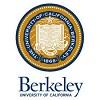
Established in 1868, University of California, Berkeley (UC Berkeley) offers more than 350 degree programs to nearly 22,000 students. Programs are offered in 14 colleges and schools that house dozens of departments. The Electrical Engineering & Computer Sciences (EECS) Department offers two different undergraduate degrees from two different colleges: the BS in EECS offered by the College of Engineering (CoE), and the BA in Computer Science (CS) from the College of Letters & Science (L&S).
Technical requirements in CS “are almost identical,” says the school. “However, breadth requirements and admissions processes vary significantly.” Course highlights for both programs include The Structure and Interpretation of Computer Programs, Designing Information Devices and Systems, Machine Structures, and Data Structures and Programming Methodology.
All EECS and CS students have access to the XR Lab@Berkeley —a Virtual, Augmented and Mixed Reality Laboratory (VR/AR/MR), the student-run Extended Reality@Berkeley (est. 2015), and the FHL Vive Center for Enhanced Reality , which sponsors research and “high-impact” applications in AR/VR and Artificial Intelligence (AI).
Collectively, the Labs and Centers at UC Berkeley “train new engineers in all aspects of Virtual and Augmented Reality, raise awareness about technology’s potential for humanity, and advance the field through state-of-art research and development initiatives.”
Graduates of the programs go on to work in a variety of environments and fields such as Computer Systems Design Firms, Computer Vision and Robotics, Artificial Intelligence (AI) and Machine Learning, Software Development, Defense, Production, Design, Entertainment, Healthcare, Engineering, Aerospace, and more.

The University of Michigan – Ann Arbor (UM) serves more than 40,000 students enrolled in hundreds of programs in 19 schools, colleges, and divisions. Founded in 1817 as one of the first public universities in the nation, UM houses one of the world’s oldest and largest programs in Computation. The area serves nearly 11,000 students.
Pathways for AR/VR students include BS and MS degrees in Computer Science and a Minor. A Graduate Certificate in Extended Reality (XR) is also available in the School of Information. The Computer Science degrees are offered in two colleges—the College of Engineering and the College of Literature, Science, and the Arts (LSA). Programs are administered by the Computer Science and Engineering (CSE) Division of the Electrical Engineering and Computer Science (EECS) Department. Note that programs are “program requirements are almost exactly the same for both majors,” says the school.
Course highlights for the CS Programs include Interactive Computer Graphics, Artificial Intelligence (AI), Programming Languages, Human-Centered Software Design & Development, Computer Game Design and Development, Autonomous Robotics, and Machine Learning.
To enhance the MS degree, graduate students may add the Graduate Certificate in XR. Open to all graduate students regardless of degree program, the XR program requires 12 credit hours of study. Students will learn about the design, construction, and evaluation of XR experiences. Pre-approved previous, current, and future courses include AR/VR for Sustainability, Augmented Tectonics, Developing AR/VR Experiences, Educational Applications for Augmented and Virtual Reality, Immersive Media, Sci-Fi Prototyping, and Virtual Engagement in Digital Technologies.
Students in all programs have access to the Center for Academic Innovation’s XR Initiative. Founded in 2019, the Initiative works with all 19 schools, colleges, and divisions to develop new XR related educational technology designed to enhance the learning experience for students. The Initiative also focuses on making XR technology more accessible on campus and encouraging its use in higher education.
Initiative participants “work with university faculty to actively look for new ideas and opportunities to support.” Past projects include Cross-platform XR Tools for Supporting Student Creativity in Immersive Audio Design , Comparison of Student Learning of Head and Neck Anatomy and Diagnosis of Pathology Using XR, and XR Studio.
UM CS and XR graduates are prepared for careers in AR/VR, Digital Arts and Entertainment, Software Engineering, Simulation Engineering, Applications Development, and more.
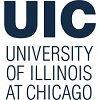
Formed in 1982 and serving 33,518 students across 16 colleges and schools, the University of Illinois at Chicago (UIC) is the largest university in the Chicago metropolitan area. The College of Engineering at UIC houses the Department of Computer Science (CS), which is the fastest growing program at the school. Pathways include a BS in CS and Design, an MS and BS/MS in CS, and a CS Minor. A PhD in CS is also available for students interested in research or teaching.
UIC is the only public university in the U.S. that offers a Computer Science and Design undergraduate degree “created specifically to prepare students for these opportunities,” says the school. The program “offers professional training in both fields, integrating design courses — fundamental through advanced — with a strong foundation in computer programming.”
Examples of areas covered include AR/VR Design, Computer Graphics, Creative Coding, Human-Centered Computing, Designing and Developing Digital Interfaces and Applications, Media Design, and Virtual Health and Medicine. The program consists of a combination of studio courses and required technical courses that allow students to “work in teams and to practice being a bridge between the technological and the creative.”
The MS in CS consists of 36 credit hours. Students may enroll in the BS/MS Program, which takes just five years to complete. The MS has coursework only, project (capstone), and thesis options (research or PhD preparation). Featured courses include Virtual, Augmented, and Mixed Reality, Artificial Intelligence (AI), Design of Mobile Apps, and Video Game Design and Development.
Students in all programs have access to the Electronic Visualization Laboratory (EVL and the Human-in-Mind Engineering Research Lab (HiMER).
Established in 1973, EVL is an interdisciplinary research laboatory in the College of Engineering’s Computer Science Department “that specializes in collaborative visualization, virtual reality, visual data science, and advanced computing and networking infrastructure.” The Lab is supported by the National Science Foundation (NSF), the National Institutes of Health (NIH), Argonne National Laboratory, The Joseph and Bessie Feinberg Foundation, the Shirley Ryan AbilityLab, the State of Illinois, and UIC.
The HiMER Lab highlights recently funded research including AR/VR, Human Performance Modeling, Human-System Interaction, Data Analytics, and Transportation Safety. Recent AR/VR projects include Projection-Based Mixed Reality Platform-Spatial Mixed Reality , Gaze-Based Multimodal Interactions in AR , and Human Perception and Cognition in AR .
UIC CS graduates have landed positions at Adobe, Amazon, Apple, Blue Cross Blue Shield, Cisco, Facebook, Google, HP, LG, Microsoft, Redbox, Verizon, and more.
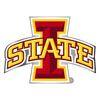
Iowa State University (ISU) is a public, land-grant university that welcomed its first class in 1869. The school serves 31,825 students enrolled in more than 100 majors in 10 colleges and schools. The Graduate College offers several programs for students interested in AR/VR. Options include MS and PhD degrees in Human-Computer Interaction (HCI) and a Master of Human-Computer Interaction (MHC – offered on-campus and online). A 12 credit hour HCI Graduate Certificate is also available.
Students in the interdisciplinary HCI program “benefit from interacting with ISU faculty from departments representing every college in the University,” says the school, “as well as researchers” at the Virtual Reality Applications Center (VRAC). Core courses in HCI are divided into four areas: Design, Implementation, Phenomena, and Evaluation.
Course highlights include Virtual Worlds and Applications, Python Application Development in HCI, Computer Graphics and Geometric Modeling, Models and Theories in Human Computer Interaction, Learn to Speak AI, Advanced Learning Environments Design, and User Engagement.
The VRAC leads ISU’s HCI Program. This interdisciplinary research center “supports the research of faculty and students representing all seven of ISU’s colleges, as well as the interests of collaborators from several federal agencies and numerous industry partners.” Participants have a variety of “strengths in state-of-the-art interaction technologies” including virtual, augmented and mixed reality (VR/AR/MR) mobile computing, developmental robotics, haptics interaction, HCI, and user experience (UX).
Graduates of the HCI Programs at ISU are prepared for careers in the private or public sector. Master’s degree graduates are also prepared for continuation of studies in a PhD program.

Founded in 1887 as the North Carolina College of Agriculture and Mechanic Arts, North Carolina State University (NC State or NCSU) serves more than 36,000 students. The school offers more than 300 undergraduate and graduate degree programs in 12 colleges and schools housing 65 departments.
The College of Design houses the Art + Design Department, which offers BA and MA degrees in Art + Design. A Minor is also available. Students in all programs have access to the College of Design’s Experience Design and Mixed Reality Labs, and the College of Engineering’s Virtual and Augmented Reality Lab.
The Experience Design Lab (IX) is a cross-disciplinary community of artists, designers, humanists, scientists and engineers that explore “virtual and augmented experiences as a cultural practice,” says the school.
The Mixed Reality (MxR) Lab consists of designers, engineers and “tinkerers” working on the “challenge of creating impactful changes in the user experience of Virtual, Augmented, and Mixed Reality (VR, AR, MR) technologies.” Current projects include Axe One , Pop’n’Play , and Morphaces .
The Virtual and Augmented Reality Lab (VR) in the College of Engineering’s Edward P. Fitts Department of Industrial and Systems Engineering studies the interaction between humans and AR/VR. Researchers in the Lab also explore “the potentials in VR/AR for various real-world applications.” Current active projects include User Performance Training and Patient Motor Learning .
Available equipment includes four-sided (C4) Cave Automatic Virtual Environment (CAVE) with full-body tracking capability, several head-mounted displays (HMDs), and a head-up display (HUD). In addition, a number of other peripheral devices that support movement tracking are available.
In the College of Design’s interdisciplinary BA in Art + Design, students have the opportunity to learn about and develop creative portfolios in areas such as AR/VR, Interactive and Computational Media, Motion Graphics, Visual Effects, Graphic and Interactive Narratives, Game Design, 3D Modeling, and many others. Course highlights include Art + Design Laboratory, Creative Technology, Digital Imaging, Advanced Digital Techniques, Digital Motion, Animation, and Visualization.
The MA in Art + Design (M.A.D) focuses on Experimental Media Arts. The program “encourages students to explore the intersection of digital and material technologies,” says the school, “to create interactive and engaging experiences that push the boundaries of storytelling, learning and play.” Depending on the student’s academic background and experience, they may enroll in the 30-, 48- or 72-credit Track. Course highlights include Digital Motion, Special Effects, Animation, Dynamic Data, Digital Modeling, Coding for Designers, Sequential Imaging, and Visualizing Narratives.
Graduates of the Art + Design Department are currently working in fields such as Software Design, Multimedia, Illustration, Textile Design, Fashion and Apparel Design, Art and Design Education, Photography, Filmmaking, Special Effects-Digital, Set Design, Exhibition Design, Museum Education, Public Art and Entrepreneurs.

University of Central Florida (UCF) offers more than 230 degree programs in 13 colleges. The College of Engineering and Computer Science, Department of Computer Science offer several programs of interest for aspiring AR/VR professionals. Options include a BS in Computer Science (CS), an Accelerated BS/MS in CS, and MS and PhD degrees in Modeling and Simulation.
Course highlights for the BS in CS include Advanced Artificial Intelligence (AI), AI for Game Programming, Algorithms for Machine Learning, Computer Architecture, Computer Graphics, Game Programming, Robot Vision, and Software Engineering. Graduates of the program are prepared for careers in AR/VR, Computer Architecture, Computer Gaming, Computer Vision, Evolutionary Computing, Media Convergence, Robotics, and many others.
The MS in CS allows students to specialize in a research area. This includes options such as Virtual Reality and Human Computer Interaction (HCI), AI, Mixed and Virtual Reality Mobile Computing, Machine Learning, and Modeling and Simulation. Pairing (combining two research areas) is also an option. In addition to the Specialization, students in the program “receive a broad background in the areas of programming systems and languages, computer architecture, and computer science theory.”
In addition to working in AR/VR, graduates of the MS in CS Program work in Computer Science, Computer Systems, Software Development, Cyber/Information Security, Software Engineering, and more.
In addition to the CS Programs, UCF’s Computer Science Department houses the SREAL Synthetic Reality Lab and the Interactive Systems and User Experience Lab.
The SREAL Synthetic Reality Lab is a center for researchers, software developers, artists (modelers/animators), interactors (digital puppeteers), PhD students, and affiliated faculty members. With 7,000 square feet of experimental and office space, SREAL houses areas for the development of mixed reality experiences, the delivery of interactive training using digital avatar technology, human surrogate and robotics research, and developing cultural heritage and STEM experiences.
SREAL (pronounced Surreal) is part of several larger UCF entities, most notably the Institute for Simulation & Training (IST), which houses it.
The Interactive Systems and User Experience Lab focuses on “the creation and evaluation of advanced interfaces that support education, entertainment, and general work productivity.” The mission of the Lab is to “develop innovative techniques, tools, and applications that improve the overall experience between humans and machines.”

Pennsylvania State University at Behrend (Penn State Behrend) is a four-year and graduate college of Penn State. The school serves 5,050 students enrolled in more than 45 academic programs in four schools—the Black School of Business, School of Engineering, School of Humanities and Social Sciences, and School of Science.
The School of Humanities and Social Sciences houses the Digital Media, Arts, and Technology (DIGIT) Program—Penn State’s only undergraduate degree in Digital Humanities. The BA in DIGIT is an interdisciplinary program “combines the broad perspective of the liberal arts with technical skill,” says the school. This means, students will study technology history and theory while “learning to use the newest programming languages, digital tools, and computer systems.”
Students can enhance their skills by participating in the Virtual/Augmented Reality (VAR) Lab at Penn State Behrend.
The VAR Lab “works with students, the community, and industry partners to implement augmented and virtual reality solutions.” Lab participants have opportunities to “recreate historically important venues in AR/VR to bring the world to Pennsylvania students ((e.g., Fort Le Boeuf). Methods of recreation in the Lab include “using visually and spatially accurate lidar scans of existing venues and designing 2D/3D digital models when scanning is not an option.”
Lab participants will also work to “address training gaps in the workplace (e.g., virtual training simulations),” and increase the “accessibility, affordability, and availability of mental health initiatives.”
DIGIT students also have the opportunity to add two concentrations, a second major or a Minor in an area such as Interactive Entertainment (Game Development). Concentration options include Modeling and Simulation/Human-Computer Interaction (HCI), Sound and Motion, Digital Humanities, and Data Visualization and Assessment.
In addition to working in AR/VR in a wide range of fields, career options for DIGIT graduates include Digital Art, Technical Producer, Digital Art Director, Front-End Analyst, Digital Marketing Strategist, Designer, and Digital Video Editor, to name a few.

Serving nearly 47,000 students, University of Arizona (est. 1885) offers Bachelors, Master’s, and Doctoral degree programs as well as first professional programs and specialist programs, and a variety of undergraduate and graduate minors. Programs are offered in 20 colleges and additional specialized schools. The University of Arizona (UArizona) College of Social & Behavioral Sciences houses the School of Information (iSchool), which offers a BS in Information Science and Technology and a Games and Simulation Certificate.
The BS Program is organized into three tiers: Core Courses, Intensive Computing, and Research Methods, Computational Arts, and Society. The Intensive Computing tier consists of a “customized course selection based on student focus,” says the school. Coursework can include virtual reality, artificial intelligence (AI), machine learning, human-computer interaction (HCI), neural networks, and informatics applications. The tier has a required Individual Studies Component and Senior Capstone course.
The Games and Simulation Certificate “provides students with the design and development skills necessary to create virtual interactive environments that span across devices and platforms.” Course highlights for the program include Virtual Reality, Game Programming, Computing and the Arts, Technology of Sound, and Advanced Game Development. Students in the program will gain real-world experience through collaboration with peers and the creation of several working prototypes.
Other program highlights include access to several active labs and employment opportunities with major companies. Some top employers hiring UArizona graduates include Amazon, Raytheon Technologies, Microsoft, Intel Corporation, Lockheed Martin, Texas Instruments (TI), and IMB Systems & Technology Group.
The Extended Reality and Games Lab (XRG Lab) is housed within the iSchool. Researchers and participants here study novel interaction techniques and the enhancement of extended (virtual/augmented/mixed) reality systems for improved usability and user experience. Work in the lab “mainly consists of design, development and evaluation (through empirical user studies) of these interaction techniques and enhanced extended reality systems.”
XRG Lab projects are funded by the National Science Foundation (NSF), the UArizona Social & Behavioral Sciences Research Institute (SBSRI), and others. Project examples include Grabbable Holograms , Googly Eyes , Mirrored VR , and Bounce: A Mixed Reality Serious Game for Teaching Newtonian Physics Concepts .
The UArizona Wyant College of Optical Sciences houses an additional lab known as the 3D Visualization and Imaging Systems Lab . Designed for research in emerging technologies such as mixed- and augmented realities (MR-AR), the Lab focuses on the development of 2D/3D display systems, 3D visualization systems, 3D human computer interaction methods, and image acquisition systems. Researchers are interested in applying these technologies in medicine, scientific visualization, and education.

University of Florida (UF) serves nearly 58,000 students making it one of the top five largest universities in the state. The school offers 100 undergraduate majors and 200 graduate programs in 16 colleges. Among UF’s colleges is the College of the Arts, which houses the Digital Worlds Institute. Here, students interested in AR/VR can earn a Master’s in Digital Arts & Sciences (MiDAS).
This one year, accelerated master’s program in emerging technologies (specifically AR/VR) accepts individuals from all backgrounds. Program highlights include a collaborative environment, personal attention from faculty and content area experts and opportunities to work on industry-standard projects and create a professional portfolio.
The MiDAS Program covers Technical Skills: Game Engines and Development (i.e. Unity 3D) and Software and Hardware Integration; Design and Interactivity: Visual Design Tools/Tech, 3D for VR/AR UI-UX, Audio, Digital Compositing, and Digital Storytelling; and Professional Skills: Project Proposals, Production Pipelines, Project Management, and Critical Thinking and Analysis.
Students will have access to the UF Reality Lab at the Digital Worlds Institute . The Lab explores and promotes research and educational endeavors in AR/VR. Sample courses in the Lab include Production of Immersive Environments, Digital Storytelling, Movement, Media, and Machines, and Interdisciplinary Research Seminar.
Past student projects have included include Space Mail , ScootVR, HoloTouch , Virtual Standardized Patient , WonderLab , Metrolia VR Multiplayer Mech Duel , and SpArc: Animate Using Your Hands in Virtual Reality .
Graduates of the MiDAS Program and others at UF have landed positions at 22squared, Aramark, Cox Media Group, ESPN, Glaxo Smith Klein, Reed Exhibitions, Boeing, Walt Disney, GE Digital and Meridium, Spirit Airlines, the U.S. Department of Defense, and the U.S. Navy.

University of Illinois at Urbana Champaign (UIUC) serves more than 47,000 students from all 50 states and 100+ countries. Founded in 1867, the school is one of the original 37 public land-grant institutions created after President Abraham Lincoln signed the Morrill Act in 1862.
UIUC offers more than 150 undergraduate programs and over 100 graduate and professional programs in 16 colleges, schools, and academic units. Grainger College of Engineering’s Thomas M. Siebel Center for Computer Science, houses a Computer Science (CS) program suited for students interested in careers in AR/VR. Options include a BS, MS, and 12 credit hour Minor in Computer Science (CS).
Students in the BS in CS have the opportunity to take up to 18 credit hours of technical electives and six hours of CS advanced electives. This allows students focus in an area of interest. The Media, Intelligence and Big Data, and Human and Social Impact areas include course options such as Virtual Reality, AI for Computer Games, Applied Machine Learning, Mobile Interactive Design, Audio Computing Lab, to name a few.
The MS in CS is a research-oriented degree that requires 28 credit hours of coursework and four credit hours of thesis. The program consists of 10 core areas, including Interactive Computing, Artificial Intelligence (AI), Scientific Computing, and Programming Languages to name a few.
In addition to choosing a focus area (BS) or core area courses (MS) that suit their interests, students have access to the VR@Illinois Lab.
Supported by members from the Center for Innovation in Teaching & Learning (CITL) and University Library’s IDEA Lab and Media Commons and funded by investments from campus Technology Services, VR@Illinois is a collaborative initiative that supports “virtual, augmented, and extended reality teaching, research, and exploration” at UIUC, says the school.
The Lab houses studio spaces for VR creation and exploration, mobile virtual reality classrooms, and loanable headsets and cameras for viewing and capturing 360 media. Lab experts provide consultations on implementing VR in the classroom and assistance with VR research projects.
Graduates of the Computer Science and other related programs at UIUC are routinely hired by some of the world’s top companies. Top employers include Amazon, Google, Microsoft Corp., Deloitte, Ernst & Young and JPMorgan Chase & Co. Other employers include Apple Inc., Tesla, Facebook, IBM, Caterpillar and ADM.
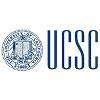
University of California, Santa Cruz (UC Santa Cruz or UCSC) is part of the 10-campus University of California System. The school serves nearly 19,200 students enrolled in 130 programs in dozens of colleges and schools. The Baskin School of Engineering, Computational Media Department (CM) houses the BS and MS Programs in Computer Science, and the MS and PhD degrees in Computational Media.
Course highlights for the programs include, Introduction to Augmented Reality and Virtual Reality, Computer Systems and C Programming, Programming Abstractions: Python, Game AI, User Experience for Interactive Media, Software Engineering, Computational Media Methods, Artificial Intelligence (AI), Applied Machine Learning, Advanced Computer Graphics and Animation Laboratory, and Data Programming for Visualization.
Students will complete a variety of projects throughout all programs. In the final year, graduate students will complete a thesis OR additional project with written report.
Also housed within the Baskin School is the Cave Automatic Virtual Environment (CAVE) Lab . In the Lab , faculty and students have the opportunity to “create three-dimensional virtual environments that multiple users can interact with at the same time,” says the school. The facility houses a room-sized, advanced visualization system also called the CAVE, which “combines a high-resolution, stereoscopic projection and 3-D computer graphics to create a complete sense of presence in a virtual environment.”
Multiple users in the CAVE can become “fully immersed in the same virtual environment at the same time.” The CAVE Lab also features “moveable walls that allow the environment to be reconfigured for different applications,” along with “Mechdyne CAVE and FLEX technology.” The Unity development platform is used to create 3-D interactive environments.

Established in 1804, Ohio University is the state’s first public university. Serving nearly 30,000 students across more than 10 campuses and centers, the school houses nine colleges that offers more than 250 programs of study.
The Scripps College of Communication at Ohio University is home to the J. Warren McClure School of Emerging Communication Technologies (ECT), which offers an Information and Telecommunication Systems Major, (ITS ECT) with a VR/AR Track. In partnership with the School of Media Arts & Studies, the McClure School also offers a VR and Game Development Emphasis, which is part of the Games and Animation Major.
The VR/AR Track , which leads to a BS degree, is “dedicated to emerging communication technologies production, e.g., virtual and augmented reality (VR/AR) while also covering information networking and telecommunication systems,” says the school. Students in the program develop a “competitive edge by combining courses that build competency in both networking and content production.”
They will learn “about the design, management, regulation, and application of information network technology; the production, use, and implementation of VR/AR; as well as how businesses acquire and sell such products and services.”
The VR and Game Development Emphasis leads to a BS in Media Arts and Studies – Games and Animation. Students begin the program “with a game design or animation pathway, with many options to enhance either area,” including courses in AR/VR offered by the McClure School. The emphasis area is “enhanced with courses exploring information technology and networks, as well as scripting and coding.” Students also “pursue additional credentials such as a business or communication minor, or certificates in entrepreneurship or social media.”
Students in all programs have access to Game Research and Immersive Design (GRID) Lab . Established in 2005, the GRID Lab is an initiative of Scripps College. Developed by the School of Media Arts and Studies, the Lab focuses on the research and development of virtual reality, serious and educational games, simulations, and computer animation. It “provides Ohio University with the personnel, facilities, and tools to create such interactive digital media and technologies.”
The McClure School has the highest job placement rate in the Scripps College of Communication. VR/AR graduates have gone on to work for Warner Brothers, Sony, Disney, Bethesda, Microsoft, Unity, and many other major tech and entertainment companies. ITS graduates are also employed in branches of the U.S. Armed Forces and in state and federal government offices and with consulting companies like Accenture, Booz Allen Hamilton, Deloitte, PwC, and Capgemini.
VR and Game Development graduates have been hired at Blizzard, Disney/Disney Imagineering, EA, Google, Sony PlayStation, Riot Games, Unity, and many others.
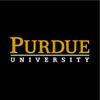
Founded in 1869, Purdue opened its doors on September 16, 1874 with six instructors and 39 students. Today, the West Lafayette campus serves 46,000 students, and approximately 2,000 full-time faculty teach and conduct research in Purdue’s 12 colleges and schools, and Purdue Polytechnic Institute.
For students interested in AR/VR, Purdue Polytechnic Institute offers an MS in Computer Graphics Technology (MS CGT). This “highly flexible degree,” enables students to take coursework in one or more areas and “create an individualized plan of study,” says the school. AR/VR coursework includes Augmented Reality, Collaborative Virtual and Augmented Environments, Product Development Using Virtual Environments, Virtual Environments, Cognition & Human-Computer Interaction (HCI), Special Topics In Human-Centered Design And Development, Computer Graphics Programming, and Advanced Real-Time Computer Graphics.
Students will also complete several projects including Computer Graphics Project, Directed MS Capstone, and Directed MS Project.
Graduates of the MS CGT Program are prepared to seek careers in all sectors that utilize Virtual and Augmented Reality. Graduates have been hired at DreamWorks, Google, Deloitte, Salesforce, and more.

The Ohio State University (OSU) was founded on March 22, 1870 as Ohio Agricultural and Mechanical College. Today, OSU offers programs in all areas across 18 colleges and schools. The school houses 200 academic centers and institutes and nearly 68,000 students across all campuses.
The College of Arts and Sciences at OSU houses the Department of Design, which offers an MFA in Design with Digital Animation and Interactive Media (DAIM) Track. Also housed in the College of Arts and Design is the Advanced Computing Center for the Arts and Design (ACCAD).
ACCAD is a “is creative hub for scholars and practitioners of digital arts and sciences,” says the school. The Center conducts “research centered on the use and integration of emerging arts technologies,” in a “generous physical space, complemented by specialized and flexible studios for animation, motion capture, interactive design, media production and mediated performance design.”
In addition to having access to the ACCAD , DAIM students have the opportunity to take 12 studio elective credits that “provide hands-on experiences.” The 60 credit hour program includes core design courses, open electives in the themes of studio/lab, history/theory/criticism, and collaborative/interdisciplinary studio, writing development, and a thesis project. Areas covered include real time graphics and virtual environments, performance animation, game art, responsive and interactive media, and installations, to name a few.
Students in the program will “work closely with a three-person thesis committee to develop their thesis topics and the vehicles best used for their development.”
Graduates of the MFA DAIM Program hold positions such as Augmented Reality Designer, Mixed Reality Designer, Virtual Reality Designer, Human-Computer Interaction (HCI) Designer, Interaction Designer, Motion Graphics Designer, Game Designer, Experiential Designer, Multimedia Designer, CG Generalist or Specialist, Visualization Specialists, and many others.
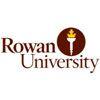
Rowan University began as a teacher preparation college in 1923. Now a regional university, Rowan serves more than 18,000 students enrolled in more than 80 bachelor's and 60 master's degree programs, five doctoral programs, and two professional programs in 14 colleges and schools. The College of Science and Mathematics at Rowan University houses the Computer Science Department, which has curricular offerings in computing disciplines such as virtual reality, computer game design, robotics, artificial intelligence (AI), blockchain technologies, mobile development, cyber security, big data, cloud computing, parallel processing, bioinformatics, database systems, and others.
Pathways for students interested in AR/VR include BS and MS degrees in Computer Science. Department course highlight include Programming Languages, Human-Computer Interaction (HCI) Robotics, AI, Systems Simulation and Modeling, Machine Learning, Computer Vision, Computer Animation, Game Design and Development, Software Engineering, Mobile Programming, and Principles of Digital Computers. Students will complete an Independent Study course and Senior Project, and they have the opportunity to complete Computer Field Experience consisting of three to 12 credits.
In addition to offering a large number of course options for students interested in AR/VR, the Computer Science Department supports “student-centric initiatives” such as learning assistants, summer internships, long-term co-op programs, and student mentoring. The Computer Science Department also works with the Rowan VR Center to provide an environment where the University’s students and faculty and community, nonprofit, government, and corporate clients can work together to create “innovative virtual reality and augmented reality applications.”
Projects have included the Cold Spray VR Training System , 3D Medical Viewer , Monarch Butterfly Life Cycle Simulation , FAA Visualizing Drones, and The Rite (an original immersive video game) , to name a few.
The custom-designed immersive lab has a “7-foot-high by 40-foot-wide curved wall of screens,” room for up to 25 people to work together on 3-D applications, and an “array of virtual reality and augmented reality head-mounted systems and 3-D printers.” This enables the Lab to offer services to clients in academia, government and industry such virtual reality consultations, virtual reality educational seminars, and 3-D printing, scanning and prototyping.
Graduates of the Computer Science Programs at Rowan end up working for industry leaders and top government organization such as Amazon, Symantec, Lockheed Martin, ASRC Federal Mission Solution, Federal Aviation Administration, US Navy, FBI, Comcast, SAP, IDT, Raytheon, and many others.
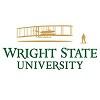
Wright State University serves 12,000 students annually and offers 315 undergraduate, graduate, doctoral, and professional degree programs through five colleges and two schools. Originally founded as a branch campus of The Ohio State University and named in honor of Wilbur and Orville Wright—inventors of the world's first successful motor-operated airplane—Wright State University became an independent institution in 1967 and Ohio's 12th state-assisted university.
The College of Engineering and Computer Science at Wright State houses the Department of Computer Science in Engineering, which has several program options for students interested in AR/VR. Pathways include BA/ BS, and MS Degrees in Computer Science (CS). A CS Minor is also available.
Students in all programs are encouraged to take advantage of study abroad, co-op/internships, and/or service learning. BA and BS students may also engage in undergraduate research. Department course highlights include Augmented and Virtual Reality, 3D Modeling and Computer Animation, Scientific Visualization and Virtual Environment, Artificial Intelligence (AI), Applied Machine Learning, Game Programming, Medical Image Analysis and Visualization, Pattern Recognition, Computer Graphics, C++ Programming for Scientists and Engineers, Computer Engineering, Digital System Design Laboratory, Object-Oriented Programming and Design, Advanced Robotics Laboratory, and Mobile Computing.
In addition to a wide variety of courses related to AR/VR, CS students have access to The Advanced Visual Data Analysis (AViDA) Group and the Virtual Environment Research, Interactive Technology, And Simulation (VERITAS) Facility.
The AViDA Group conducts research and supports the community in the areas of Virtual Environments, Medical Imaging and Visualization, Scientific Visualization, Information Visualization and Analysis, and Big Data Analysis, to name a few. The Group runs the Appenzeller Visualization Laboratory—a state-of-the-art visualization facility that supports large-scale visualization along with fully immersive, virtual reality equipment. In addition, AViDA houses facilities for running full-scale virtual environments using a variety of equipment ranging from head-mounted displays to walkable CAVE-type displays.
The VERITAS Facility is part of the College of Science and Mathematics’ Department of Psychology. Owned and operated by Wright State University and housed in the Air Force Research Laboratory (AFRL) at Wright-Patterson Air Force Base in Dayton, the Facility supports basic and applied scientific research on sensory systems, virtual environments, aviation, telerobotics, and teleconferencing. The space house a CAVE system, high-performance projectors, and more.
Wright State University CS graduates go on to pursue careers in AR/VR (in many sectors), as well as Digital Design, Applications Development, Software Development, Machine Learning, Data Science, Hardware Design, Software Engineering, Design Engineering, Java Development, Programming, and more.
Graduates are employed by the Air Force Institute of Technology, Air Force Research Laboratory, Assured Information Security, Ball Aerospace, Cerner Corporation, Clear Creek Applied Technologies, Department of Defense, CDO Technologies, LexisNexis, National Air and Space Intelligence Center, The Design Knowledge Company, Northrup Grumman, Siemens, and Teradata, to name a few.

The University of Colorado Boulder (CU Boulder) was established in 1876. The school serves 34,975 students enrolled in hundreds of programs in nine colleges and schools. Among CU Boulder’s many programs are several undergraduate and graduate options that allow students to study Augmented and Virtual Reality.
Awarded through the College of Engineering and Applied Science, the BS and Minor Programs in Creative Technology and Design (CTD) offer “a broad, transdisciplinary curriculum that integrates technological skills with a critical, theoretical and historical understanding of creativity, technology and design,” says the school. The BS Creative Technology & Design (BS-CTD) requires 128-130 credit hours of study and the Minor requires 21 credit hours.
BS-CTD students may choose a focus area through elective offerings. Areas include Augmented and Virtual Reality, Interactive Computing, Game Design, Robotics, Physical Computing, Sound Design, User Interface and User Experience (UI/UX), and more. Other program highlights include creative projects, regular professional development opportunities, workshops and guest speakers, internships with industry partners, employment in the CTD research and student labs, and portfolio development.
To complete the major, BS-CDT students take a two-semester Capstone sequence where they produce one major culminating project.
The College of Engineering and Applied Science also offers an MS in CTD with a Creative Industries Track. The project-based curriculum allows students to construct their own focus area. Some popular options include Virtual and Augmented Reality, Human-Computer Interaction (HCI), Interactive Product Design and Development, Game Design and Development, Arts and Media Production, UI/UX, and Learning and Education. “Through workshops, visiting speakers, studios and classes,” MS students also have the opportunity to “work directly with leading professionals on real-world issues, gaining design expertise and technical skills as they learn the business of creativity.”
All CTD programs are housed within the Alliance for Technology, Learning and Society (ATLAS) Institute, with core courses taught in the Roser ATLAS Center.
Founded in 1998, the ATLAS Institute also houses a number of labs and centers designed to support student work on independent projects. Current labs and centers include ACME Lab, Living Matter Lab, THING Lab, Unstable Design Lab, Laboratory for Emergent Nanomaterials, Center for Media, Arts & Performance, BTU Lab, and Whaaat!? Lab. Past projects include AR Drum Circle , Augmented Reality and Autonomous Systems (ARIAS) , Augmented Reality Informs Human-Robot Interaction , Augmented Reality Remote Assistance (ARRA) , Haptic VR Wizard , Biolage Reactor , and Jam Station , to name a few.
CTD graduates work in a variety of areas in Art and Entertainment, Technology, Education, Healthcare, Sciences, and more. MS graduates also work in Research in all industries and Government.

Chartered in 1869, University of Nebraska-Lincoln (UNL) is the oldest institution in the University of Nebraska System. Serving more than 25,000 students, UNL is also the largest in the System. The school offers hundreds of programs in 10 colleges and dozens of departments.
The Hixson-Lied College of Fine and Performing Arts, which houses the Johnny Carson Center for Emerging Media Arts. Program options for students interested in AR/VR include a BFA in Emerging Media Arts (BFA-EMA). Students must select two emphasis areas totaling 24 credit hours, an interdisciplinary concentration, and 27 credit hours of electives.
Popular emphasis options for AR/VR students include Immersive and Interactive Media, Virtual Production, Experience Design, and Sensory Media. In the Immersive and Interactive Media Emphasis, students will create interactive and immersive media such as virtual and augmented realities, interactive and immersive environments, chat bots, Artificial Intelligence (AI) voice assistants, games, and the Internet of Things, which includes technologies such as smart home automation.
In Virtual Production, students create animations, graphics, and 3D models. In Experience Design, students design “projects and experiences that synthesize the virtual and the real,” says the school. Sensory Media covers physical computing, wearable technologies, human computer interaction (HCI), and hardware and software.
BFA-EMA students will also spend two semesters each in five studio and lab courses including the Visual Expression Studio, Computation and Media Studio, Innovation Studio, Story Lab, and Sound Lab. Other program highlights include an Entrepreneurship course from the College of Business that introduces students to the fundamentals of entrepreneurship and business creation, and a yearlong Capstone Project that allows students to work in teams to “develop, create, organize, prototype, and complete a fully realized work ready for distribution via appropriate media.”
Graduates of the BFA-EMA are Virtual Reality Designers, Creative Technologists, Innovation Designers, App Designers, and Theme Park Experience Design. They work in Wearables/Physical Computing, Artificial Intelligence (AI), Sound Design, Robotics, Game Design, Film Visual Effects, Film Production Design, Animation, and more.
Search Rochester.edu
NRT PhD Trainees—2023-2024
Cohort starting in 2023-2024, adma gama‐krummel.
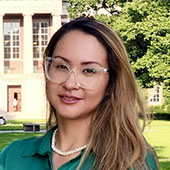
Research interest: Adma is fascinated with the interplay between philosophy, education, and technology, especially the potential of AR/VR in education. She has a background in philosophy and education which gives her a unique perspective on how technology influences learning. Adma has done various projects related to AR/VR technologies which has amplified her interest in the ethical implications of AI in education, particularly the development of "technoselves", which is the concept of human identity in a technological society. Adma wants to explore students' virtual identities using VR for learning.
Email: [email protected] LinkedIn: Adma Gama-Krummel Info
Ekram Hossain

Research interest: His passion lies in creating diverse assistive interventions and feedback systems designed for therapeutic purposes and human performance enhancement. Ekram’s research interest is centered around the design of AI‐driven assistive interventions combined with Augmented Reality (AR) technology. His ultimate goal is to improve the quality of life for deaf children over the long term, a particularly pertinent focus given that 90% of deaf children are born to hearing parents.
Email: [email protected] LinkedIn: Ekram Hossain Info
Akhil Kasturi
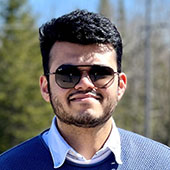
Research interest: His research focuses on AI applications in computer-aided diagnosis, with an aim to understand and refine current methodologies. Akhil's current work includes a collaborative project with Carestream Healthcare on detecting abnormally placed indwelling tubes in chest X-rays which is crucial for patient safety and applying Granger causality-based approaches on fMRI to detect neurodegenerative disorder. Akhil is interested in exploring the applications of AR/VR technologies in computer-aided diagnosis and medical imaging. Outside of work, Akhil enjoys swimming, video games, and playing the piano.
Email: [email protected] LinkedIn: Akhil K. Google Scholar: Akhil Kasturi
Anis Idrizovic
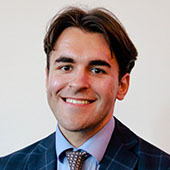
Research interest: Anis is currently working on developing a high-precision, head-mounted eye-tracking device for studying eye movements.
Email: [email protected] LinkedIn: Anis Idrizovic Info
Md Mamunur Rashid
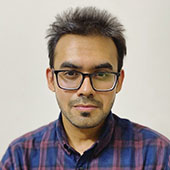
Research interest: Md Mamunur has been captivated by the transformative potential of Augmented Reality (AR) and Virtual Reality (VR) since his first encounter with immersive technologies during his Fulbright program at NYU in 2017‐2018. While attending a course at Studio 20: Digital First at the Arthur L. Carter Journalism Institute, Mamunur was introduced to the concept of immersive journalism, showed him the extraordinary capability of AR and VR technologies to create engaging, immersive experiences. As a photographer and video editor, Mamunur is inherently drawn to visual storytelling and has grown to appreciate the power of AR/VR as a tool for creating highly immersive and interactive experiences.
Email: [email protected] LinkedIn: Md Mamunur Rashid Info
Caitlin Sharp
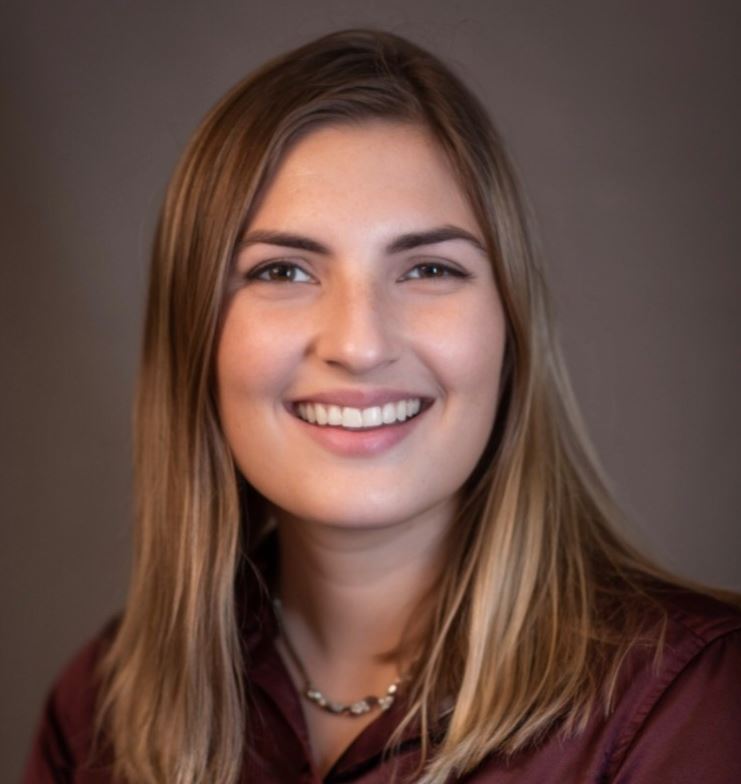
Caitlin is a doctoral student at the University of Rochester, School of School of Medicine and Dentistry. She is in the Department of Neuroscience under the direction of Dr. Benjamin Suarez‐Jimenez.
Research interest: Caitlin’s current research combines VR threat/reward conditioning tasks with fMRI to examine neural signatures for trauma exposure related to location‐specific threat/reward learning. Her VR reward conditioning work will examine how trauma exposure impacts one's ability to form cognitive maps of reward.
Email: [email protected] LinkedIn: Caitlin Sharp Info
James Spann
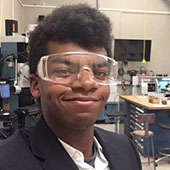
Research interest: James’s previous research has focused on modeling user behavior in a variety of settings and distilling those motions into a formalized assessment of activity. These settings have included room scale touch sensing with infrared cameras, simulated software arenas to monitor the spread of knowledge, time series modeling and prediction for suicide prevention, measuring features of motion to create a severity score of Parkinson’s disease and others. These projects utilized a combined skill set of machine learning, signal processing, time series analysis, data cleaning/processing, and more to produce several papers and posters.
Email: [email protected] LinkedIn: James Spann Info Personal Website: https://jspann.me/
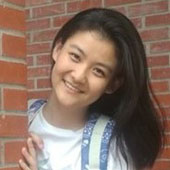
Research interest: Currently, Huiran is interested is in music generation, music information retrieval, and singing voice synthesis.
Email: [email protected] LinkedIn: Huiran Yu
Yamin Zheng
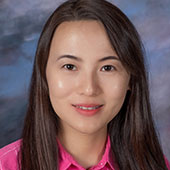
Research interest: Yamin is passionate about AR/VR’s potential to enhance language learning in an immersive and situational learning context. She is keen to innovate and design AR/VR applications for dual language immersion programs and explore how these technologies affect learning outcomes.
Email: [email protected] Google Scholar: Yamin Zheng
- Current students
- Staff intranet
- Find an event
Augmented Reality for the Visually Impaired – Sensory Augmentation
Associate Professor Craig Jin .
Research location
Electrical and Computer Engineering
Project Description:
The Computing and Audio Research Lab at the University of Sydney, Australia has a fully-funded PhD position open in augmented reality for the visually impaired, in partnership with ARIA LLC.
Applicants with a strong background in Psychoacoustics, Computer Science, Software Engineering or similar programs are encouraged to apply.
Project ARIA, Augmented Reality in Audio, seeks to endow the visually impaired with a richer sense of their surroundings using a wearable augmented reality device. Building on technologies from robotics, augmented reality, and spatialised audio display, ARIA will deliver next-generation auditory sensory augmentation with the potential to improve the quality of life for millions of people affected by vision impairment worldwide.
There are multiple PhD projects available in Project ARIA. This Sensory Augmentation-focused project will advance the auditory sensory augmentation technologies required for the ARIA wearable device to perform reliably and efficiently in a breadth of usage scenarios.
We take a broad view of auditory sensory augmentation as comprised of three parts: (1) sensors and machine artificial intelligence extract information for a targeted objective; (2) this information is rendered via the auditory channel as sound; (3) we enable efferent feedback control via hand/wrist or other sensors. Experiments are run using motion capture and the latest AR/VR/XR equipment. The challenges are to convey navigation, social, or symbolic information via the auditory channel in perceptually consistent and meaningful ways.
The project's aims include:
- Establishing a psychoacoustic simulation environment to support rapid development and evaluation of novel auditory sensory augmentation paradigms
- Adapting computational imaging technologies to propose novel methods for auditory sensory augmentation
- Characterising and calibrating auditory sensory augmentation paradigms via simulation, controlled lab experiments, and user trials
- Developing auditory sensory augmentation algorithms to best make use of incoming machine vision sensor information
- Supporting development of the high-level sensory augmentation algorithms and the full sensory augmentation pipeline
Research Environment
Embedded in the School of Electrical and Computer Engineering, the Computing and Audio Research Lab (CARLab) is focused on auditory sensory augmentation, machine hearing, and morphoacoustics (morphoacoustics.org). We employ audio signal processing and machine learning techniques to develop new concepts and understandings that will provide new technologies for auditory sensory augmentation and machine hearing.
CARLab offers specialised acoustic facilities (anechoic chambers, semi-anechoic chamber, loudspeaker arrays, linear and spherical microphone arrays, AR/VR/XR platforms). You will have access to mechanical and electronics workshops and a pool of technical staff to help realise your research ambitions. You will also have the opportunity to work closely with Project ARIA’s engineers and make use of their extensive development and testing facilities. The University of Sydney offers a rich academic setting in a world-class city, and CARLab has strong ties to a network of nearby and international academic and industrial collaborators.
Additional information
A fully funded 3-year PhD scholarship covering tuition fees and a stipend covering living expenses, with extension to 3.5 years contingent on availability of funding.
Successful candidates will have:
- A bachelor’s degree in a relevant discipline
- Interest in developing novel auditory sensory augmentation systems and working with AR/VR/XR simulation environments
- Excellent communication and interpersonal skills
- Experience with one or more of psychoacoustics, computer science, software engineering, audio signal processing, sound design and engineering
- Hands-on experience with Python, Matlab, C++, and one or more video game simulation environments would be an asset
Domestic and international applicants are welcome.
How to Apply:
To apply, please email [email protected] the following:
- Transcripts
Want to find out more?
- Interested in this opportunity? Want to know what to do next? Find out all you need to know about the application process including how to approach a potential supervisor via email and how to develop a research proposal.
- Browse for other opportunities within the Electrical and Computer Engineering .
- Contact us to find out what's involved in applying for a PhD. Domestic students and international students.
Opportunity ID
The opportunity ID for this research opportunity is 3529
Other opportunities with Associate Professor Craig Jin
- Pattern analysis techniques for sound synthesis
- Interpolation of binaural impulse responses for virtual auditory displays
- Sound field recording and recreation
- Beamforming with acoustic vector sensors - Multiple acoustic source localisation using acoustic vector sensor arrays
- Speech separation and localisation using particle filtering
- Mapping 2D Images to 3D Shape
- New technique for studying human brain activity
- Next Generation Audio Coding
- Spherical multi-modal scene analysis
- Statistical models of ear shape and ear acoustics
- Binaural signal processing algorithms for hearing aids
- Real-Time Magnetic Resonance Imaging for Vocal Tract Analysis
- Fluent Mobility for the Blind Individual Using Auditory Sensory Augmentation
Carolin Reichherzer, PhD

Hi, I'm Carolin! I'm a Research Scientist in all things AR/VR. I am passionate about delivering novel AR/VR experiences for everyone that delight and connect people in new ways.
View past work Google Scholar Say hello on LinkedIn
Bridging continents with AR/VR
Since encountering AR/VR for the first time, I’ve been driven to be at the forefront of this exciting technology with its tremendous potential to shape new digital experiences and bring people closer together.
I believe the future of these technologies is built on understanding how people use new technology and finding answers to meaningful questions that identify the benefits of AR/VR for impactful experiences.
After calling Australia my home for many years and now being back in Europe, I am especially invested in finding ways for people to feel connected with loved ones who are far away. My goal is to explore future AR/VR applications that delight and inspire in meaningful ways, unlocking how people can develop rich social experiences even across continents.
Have a look at some past and ongoing work
- Generating user insights on user perception in AR/VR in collaborative and single-user settings using mixed methods, physiological sensing, and interpreting behavioral data.
- Designing experiences to enhance how connected people feel in AR/VR and identifying ways to deepen their social connections.
- Identifying the impact of 3D reconstruction on user perception and how people perceive avatars in VR.
- Creating impactful AR/VR applications to radically improve how we interact with new technology.
- Communicating insights to cross-functional teams (XFN) and guiding development to deliver an engaging user experience.
- Effective collaborator and thought leader on strategic decisions and user advocacy.
- Prototyping ideas, experiences, and scenarios at the intersection of science, design, and development.
PhD in Computer Science , University of South Australia MSc in Digital Media , University of Bremen BA in Design , University of Applied Sciences Mainz
Awards and Achievements
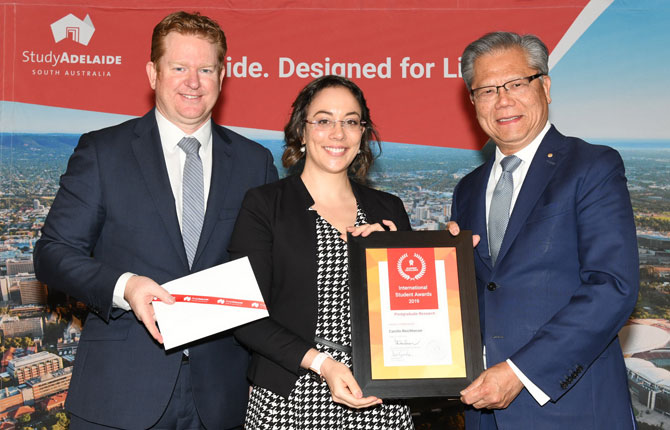
- Nominee Best Paper IEEE VR 2022
- Honourable Mention Award Best of CHI – CHI Conference 2021
- Finalist UniSA Research Excellence Awards 2020 (Research degree candidate)
- Highly Commended Academic Excellence in Postgraduate Research 2019 awarded by His Excellency the Honourable Hieu Van Le AC , Governor of South Australia
- 1st Place Winner Retail Game Changer Challenge 2019: $25.000 AUD
- Club of the Year 2019 Women in STEM UniSA Club
- Shortlisted Google Women Techmaker APAC 2019
- Division Finalist 3 Minute Thesis 2018
- Winner :output Design award: Design of an interactive application
- Winner Global Game Jam Bremen 2012: „Most creative game“ and „Best concept“
- Winner :output Design award: Branding for a design conference
In the Media
- ABC News : Virtual reality and its potential in crime scene tours - Law report with Damien Carrick . (July 2021)
- The Advertiser : University of SA study finds VR headsets allow juries to deliver fairer verdicts in complex crime trials . (July 2021)
- Mashable : Jurors could use VR to visit crime scenes, and help them reach a verdict . (July 2021)
- Daily Mail : Jurors using virtual reality headsets to see the crime scene are nearly 87% more likely to agree on a unanimous verdict than those who only see photographs . (July 2021)
- The Advertiser : University of SA investigates using virtual reality to walk trial juries through crime scenes . (March 2019)
- UniSA News : The technology to take a jury into a 3D crime scene . (March 2019)
- SA Lead : Virtual Reality more reliable than photographs for jurors . (March 2019)
- Futurithmic : How VR is changing the game beyond consumer value . (May 2019)
Example Publications
Best Paper Nominee C. Reichherzer , A. Cunningham, J. Barr, T. Coleman, K. McManus, D. Sheppard, S. Coussens, M. Kohler, B. H. Thomas. 2022. Supporting Jury Understanding of Expert Evidence in a Virtual Environment. IEEE VR 2022
Honourable Mention Award C. Reichherzer , A. Cunningham, T. Coleman, R. Cao, K. McManus, D. Sheppard, M. Kohler, M. Billinghurst, and B. H. Thomas. 2021. Bringing the Jury to the Scene of the Crime: Memory and Decision-Making in a Simulated Crime Scene. In CHI Conference on Human Factors in Computing Systems (CHI ’21), May 8–13, 2021, Yokohama, Japan. ACM, New York, NY, USA, 12 pages.
C. Reichherzer , J. Fraser and M. Billinghurst. 2021. SecondSight: Demonstrating Cross-Device Augmented Reality. In Special Interest Group on Computer Graphics and Interactive Techniques Conference Immersive Pavilion (SIGGRAPH ‘21 Immersive Pavilion), August 09-13, 2021, Virtual Event, USA. ACM, New York, NY, USA, 3 Pages.
C. Reichherzer , J. Fraser, D. Constantine Rompapas, and M. Billinghurst. 2021. SecondSight: A Framework for Cross-Device Augmented Reality Interfaces. In CHI Conference on Human Factors in Computing Systems Extended Abstracts (CHI ‘21 Extended Abstracts), May 8–13, 2021, Yokohama, Japan. ACM, New York, NY, USA, 6 pages
C. Reichherzer , A. Cunningham, J. Walsh, M. Kohler, M. Billinghurst and B. H. Thomas, “Narrative and Spatial Memory for Jury Viewings in a Reconstructed Virtual Environment,” in IEEE Transactions on Visualization & Computer Graphics, vol. 24, no. 11, pp. 2917-2926, 2018.
C. Reichherzer , A. Nassani and M. Billinghurst, “[Poster] Social panoramas using wearable computers,” 2014 IEEE International Symposium on Mixed and Augmented Reality (ISMAR), Munich, Germany, 2014, pp. 303-304.
Teaching and Volunteering
Teaching assistant at the University of South Australia
- Programming Fundamentals: Introduction to Object-Oriented Programming with Java
- Interface Design, Interaction and Experience: Introduction to human centered design, app development with JavaFX
- Virtual Reality: Introduction to Unity3D and HTC Vive
- Data Structures: Lists, Stacks, Queues, Maps and Sets
Guest lecturer at the University of South Australia
- Augmented Reality Interaction
- CHI 2022-2024: Associate Chair (Specific Applications Areas)
- Women in STEM Club UniSA: Co-Founder and Planning Director. I defined the groups core vision of Innovation, Inclusion and Inspiration. I am also responsible for creating and maintaining our project schedules and help acquire grants.
- Code like a girl: Event volunteer and panelist
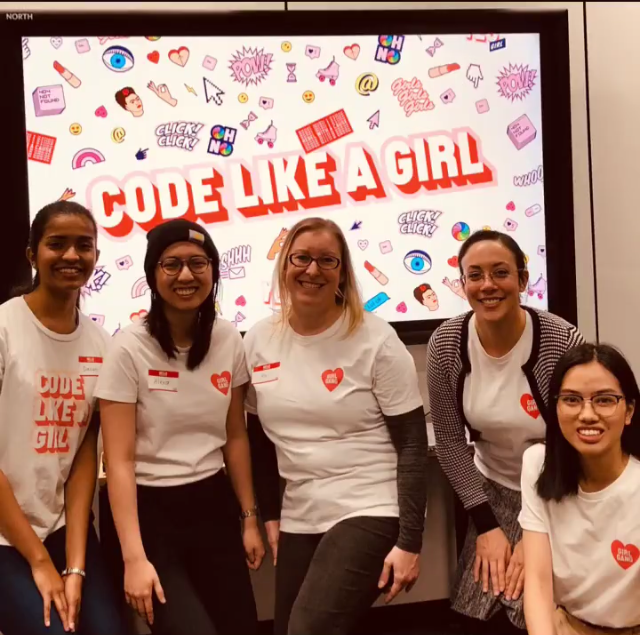
Research Grants
- Data to Decisions CRC Applied Research Grant 2019
- Data to Decisions CRC Applied Research Grant 2018
- Equipment Grant (UniSA): $73.900 AUD
- Women in Stem Club: $10.000 AUD

CLOSED: Fully Funded PhD Scholarship: Augmented Reality for the Visually Impaired - Sensing

- Establishing a physically accurate simulation environment to support rapid development and evaluation of novel sensor payload designs
- Adapting computational imaging technologies to propose novel sensing approaches
- Characterising and calibrating sensor payloads through simulation, controlled lab experiments, and user trials
- Developing low-level vision algorithms to best make use of novel sensing payloads
- Supporting development of the high-level perception algorithms and the full device mapping and display pipeline

Research Environment

How to Apply
International applicants, admission criteria.
- An Undergraduate or Master's degree with overall first-class Honours or equivalent, AND
- Completion of an Undergraduate degree with a final-year thesis/project, OR
- Completion of a Master's by research degree, OR
- Completion of a Master's by coursework degree with a substantial research project.
For Further Information

Thank you for visiting nature.com. You are using a browser version with limited support for CSS. To obtain the best experience, we recommend you use a more up to date browser (or turn off compatibility mode in Internet Explorer). In the meantime, to ensure continued support, we are displaying the site without styles and JavaScript.
- View all journals
- Explore content
- About the journal
- Publish with us
- Sign up for alerts
- Open access
- Published: 31 July 2024
Advances in olfactory augmented virtual reality towards future metaverse applications
- Zixuan Zhang 1 , 2 ,
- Xinge Guo 1 , 2 &
- Chengkuo Lee ORCID: orcid.org/0000-0002-8886-3649 1 , 2 , 3
Nature Communications volume 15 , Article number: 6465 ( 2024 ) Cite this article
1308 Accesses
33 Altmetric
Metrics details
- Biomedical engineering
- Electrical and electronic engineering
Recent advances in virtual reality technologies accelerate the immersive interaction between human and augmented 3D virtual worlds. Here, the authors discuss olfactory feedback technologies that facilitate interaction with real and virtual objects and the evolution of wearable devices for immersive VR/AR applications.
Virtual reality (VR) technology typically employs visual and auditory devices, such as head-mounted displays and VR goggles, but further immersion in virtual spaces can be achieved through wearable devices including gloves, exoskeletons, shoes, etc., and electronic skins (e-skin) 1 . These wearable devices enable the realization of full-body sensory perception or sensation, requiring the capability to perceive human movements, simulate sensations, and being flexible and comfortable for users (Fig. 1 ). Recently, sensors for detecting physical signals, e.g., stretch, pressure, temperature, etc., have been flourishing. They can be utilized for biosensing and detecting human motion signals 2 . In addition, wearable systems integrating multiple types of flexible actuators, such as tendon actuators, pneumatic actuators, and electrostatic actuators, can achieve kinesthetic, electro-tactile, vibrotactile, and thermal-tactile feedback, respectively. Such systems provide tactile stimulation to the skin’s sensory receptors 3 . Multimodal haptic feedback enables users a better immersive sensory experience by enhancing interaction between humans and virtual environments. For example, an augmented tactile-perception and haptic feedback ring, equipped with multimodal sensing encompassing tactile, temperature sensing, and feedback encompassing vibratory and thermal haptic stimuli, demonstrates the potential beyond the commercial rings 4 . A skin-integrated wireless haptic interface using actuator arrays offers multimodal mechanisms for complex feedback. Within this interface, various feedback modes including mechanical, electrotactile, and thermal, are utilized to target distinct cutaneous receptors selectively, offering users diverse haptic sensations 5 . The fusion of VR display technology with such multimodal somatosensory sensation for full-body perception and feedback is essential for future metaverse applications. An augmented 3D virtual society, i.e., a 4D VR world, could facilitate intelligent and interactive experiences across various domains such as social interactions, education, entertainment, healthcare, etc.

The development trends of physical sensing and physical feedback devices 2 , 3 , 4 , 5 , olfactory sensing devices 6 , 7 , 8 , 9 , 10 , and olfactory feedback devices 11 , 12 , 13 , 14 . Figure adapted with permission from: (‘Skin-interfaced biosensor’), ref. 2 , Springer Nature Ltd; (‘Stretchable thermos-haptic device’), ref. 3 , Wiley; (‘Augmented tactile-perception and haptic feedback ring’), ref. 4 , Springer Nature Ltd; (‘Skin-interfaced multimodal haptic interface’), ref. 5 , Springer Nature Ltd; (‘Transcutaneous blood VOC imaging system’), ref. 6 , American Chemical Society; (‘Tactile-olfactory bionic sensing array’), ref. 7 , Springer Nature Ltd; (‘Surface acoustic wave device based sensor’), ref. 8 , American Chemical Society; (‘Machine learning-enhanced mid-infrared gas sensing’, top), ref. 9 , Springer Nature Ltd; (‘Machine learning-enhanced mid-infrared gas sensing’, bottom), ref. 10 , Wiley; (‘Surface acoustic wave device based atomizer’), ref. 11 , IEEE; (‘Bionic fibrous membrane’), ref., Wiley; (‘Physical phase change of odorous paraffin wax’), ref. 13 , Springer Nature Ltd; (‘Multi-element solenoid value array’), ref. 14 , Springer Nature Ltd.
Equally important to traditional visual, auditory, and tactile sensations, olfaction exerts both physiological and psychological influences on humans. The pivotal role of olfaction in shaping human experiences is undeniable, given that many aspects of daily life that are influenced by scent emanate from industrial processes, transportation, household products, etc. With significant advancements in chemistry, biology, and neuroscience, odor sensors (gas/ liquid sensors) are witnessing the rapid development of decoding complex odor mixtures facilitated by conventional rigid and innovative flexible sensing electronics. They provide non-invasive methods for detecting biomarkers and informing about metabolic processes and disease progression for humans and plants, thus greatly appealing for real-time health monitoring and point-of-care diagnostics. A highly sensitive bio-fluorometric gas sensor “bio-sniffer” based on an enzymatic reaction is developed to measure the concentration of transcutaneous ethanol (EtOH) after drinking 6 . Concurrently, the emergence of artificial intelligence (AI)-based data analytics introduces the potential to enhance sensor functionalities towards intelligent sensing. Leveraging the robust feature extraction capabilities of machine learning, previously subtle valuable features within complex signal outputs can be discerned and harnessed, which can be used to achieve advanced sensory perceptions. A tactile-olfactory sensing array is developed to permit the real-time acquisition of the local topography, stiffness, and odor of various objects without visual input 7 , by leveraging the bioinspired olfactory-tactile associated AI algorithm. Moreover, a single piezoelectric cantilever is used to detect temperature and CO 2 concentration with the interference of humidity and temperature for noncontact sensation and monitoring human breath and plant ecosystem 8 . Photonics noses/tongues are the emerging vital tools that utilize optical technology to mimic human olfactory systems. The mid-infrared photonics nose/ tongue distinguishes different olfactory by analyzing the absorption spectra of liquid gas samples 9 , 10 . They offer advantages such as high sensitivity, rapid response, and noncontact detection, making them valuable in medical, food industry, and environmental monitoring applications. The development and application of artificial noses and tongues with better-than-human capability in AI-enhanced optical sensing technology are crucial for enhancing the sensitivity and accuracy of odor and taste detection.
Unlike the visual, auditory, and tactile sensory channels, olfaction is a nonlinear chemical sense, which makes it challenging to develop a technically comprehensive olfactory feedback system for precise control of odor generation and delivery. The olfactory feedback technologies reported so far still face huge challenges. Current olfaction-generating technologies are struggled with bulky dimensions, limited scent variety, and slow response times. Such olfaction-generating technologies are mainly associated with either large instruments designed to generate smell in a closed area/ room or an in-built bulky VR set. Consequently, these olfaction feedback approaches are far behind the advancement of visual/ auditory-based VR devices, thereby severely constraining their potential applications. For example, an olfactory display for blending many ingredients in any recipe was developed based on solenoid valves and surface acoustic wave atomizers 11 . However, the bulky circuits and systems make it difficult for them to become wearable solutions. In addition, a bionic fibrous membrane (BFM) integrated with the function of electrostatic field accelerated evaporation is applied to realize the virtual olfactory generation system 12 . Although it realizes the functionality of wearable and 4-odor generation, the response time of this system still needs to be improved. Therefore, Liu et al. reported a skin-interfaced olfactory feedback system with wirelessly programmable capabilities based on an array of flexible and miniaturized odor generators (OGs) for olfactory VR applications 13 , which demonstrates outstanding performance including rapid response rates to odor concentration, prolonged continuous operation, robust mechanical/ electrical stability, and minimal power consumption. Furthermore, they developed an OGs array with advanced artificial intelligence (AI) algorithms 14 , which exhibit milestone advances in various features of performance, including millisecond-level response time (70 ms), milliwatt-scale power consumption (84.8 mW), miniaturized size (11 mm × 10 mm × 1.8 mm), and high stability (12-hr continuous operation). Miniaturized olfactory generators with millisecond-level response times, milliwatt-scale power consumption, compact size, stability, and a high number of odor supplies establish a bridge between electronics and users for broad applications ranging from entertainment to education, medical treatment, and human-machine interfaces. Compared with traditional olfactory feedback technologies, the odor generators reported by Liu et al. based on the physical phase change of odorous paraffin wax by controlling the heating temperature exhibit advances in the realization of 32 odor with adjustable concentrations and long operation duration to support long-term utilization without frequent replacement. In addition, the whole system is the first to be built on a skin-integrated soft substrate and equipped with a paired intelligent electronic control panel, allowing remote operation of various selective odor types according to users’ requirements.
By leveraging the advanced olfactory feedback integrated with wearable/flexible technologies 13 , 14 , the high-channel odor generation arrays of a miniaturized, lightweight, and flexible format expand the interactive potential of VR applications, facilitating experiential learning and emotional modulation (Fig. 2 ). Users control the odor generation in the virtual world through event-triggering in the real world, which can be better used to help beginners recognize the smell of different types of flowers and plants, and to serve as a teaching function. It can also be used as important feedback in VR games, such as picking different fruits in a virtual orchard and simulating flower arrangements. Moreover, the importance of olfactory generation technology lies in its capacity to enhance immersion and realism by simulating various scents that evoke emotional responses and deepen cognitive engagement. While VR primarily caters to visual and auditory senses, adding olfactory stimuli enriches the sensory experience, fostering a more profound sense of presence within the virtual environment. Olfactory cues have been shown to trigger vivid memories and emotional reactions, thus contributing to heightened cognitive and emotional engagement. Olfactory feedback can also realize olfactory training to ameliorate the disorders resulting from various causes, such as upper respiratory tract infections, trauma, idiopathic factors, and neurological diseases 14 . Furthermore, research suggests that incorporating a greater variety of odor in the training regimen can enhance the rate of improvement in olfactory function. The future of olfactory feedback is advancing towards olfactory encoding 15 , by leveraging neuroscientific analysis to achieve the mapping from chemical structures to olfactory perception and microelectronics technology to realize quantified feedback for complex mixed odor. Developing bidirectional AI algorithms for enhanced odor recognition and odor generation in a system aiming at advanced metaverse applications is the next milestone technology. By combining olfactory cues with visual, auditory, and tactile feedback, virtual environments can be made more comprehensive and lifelike, expanding the application field across various domains, including entertainment, education, and healthcare, offering users a more diverse and immersive sensory experience. For example, in a fire escape practice, the fidelity and effectiveness of training can be achieved by providing the smell of smoke based on the odor generator technology from Liu et al. 13 , 14 and high-temperature sensation based on thermal-tactile feedback 3 , 5 . In the future, the advanced micro/nano-scale technology may help to create new olfactory generators and required electronic control devices for metaverse applications.
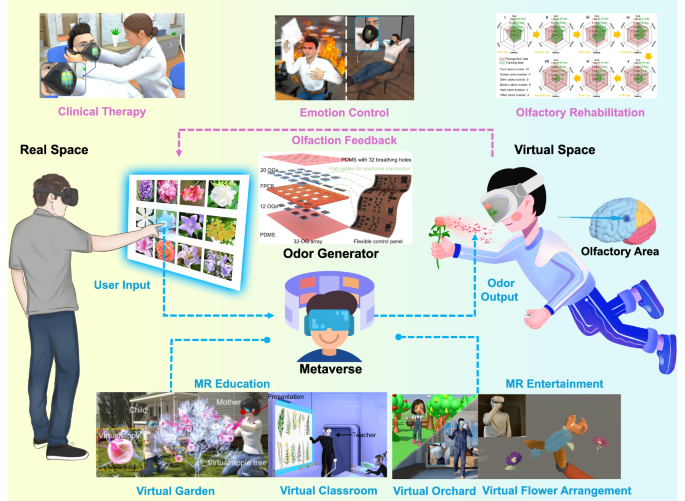
The implementation of different odor releases from odor generators bridges the gap between reality and virtual worlds, applied in mixed reality for education and entertainment 13 , 14 . Various odor releases in virtual spaces can serve clinical therapy, emotion regulation, and olfactory training for olfactory disorders.
Sun, Z., Zhang, Z. & Lee, C. A skin-like multimodal haptic interface. Nat. Electron. 6 , 941–942 (2023).
Article Google Scholar
Chung, H. U. et al. Skin-interfaced biosensors for advanced wireless physiological monitoring in neonatal and pediatric intensive-care units. Nat. Med. 26 , 418–429 (2020).
Article CAS PubMed PubMed Central Google Scholar
Lee, J. et al. Stretchable skin‐like cooling/heating device for reconstruction of artificial thermal sensation in virtual reality. Adv. Funct. Mater. 30 , 1–11 (2020).
ADS CAS Google Scholar
Sun, Z., Zhu, M., Shan, X. & Lee, C. Augmented tactile-perception and haptic-feedback rings as human-machine interfaces aiming for immersive interactions. Nat. Commun. 13 , 5224 (2022).
Article ADS CAS PubMed PubMed Central Google Scholar
Huang, Y. et al. A skin-integrated multimodal haptic interface for immersive tactile feedback. Nat. Electron. 6 , 1020–1031 (2023).
Iitani, K., Toma, K., Arakawa, T. & Mitsubayashi, K. Transcutaneous blood VOC imaging system (skin-gas cam) with real-time bio-fluorometric device on rounded skin surface. ACS Sens. 5 , 338–345 (2020).
Article CAS PubMed Google Scholar
Liu, M. et al. A star-nose-like tactile-olfactory bionic sensing array for robust object recognition in non-visual environments. Nat. Commun. 13 , 79 (2022).
Li, D. et al. Machine learning-assisted multifunctional environmental sensing based on a piezoelectric cantilever. ACS Sens. 7 , 2767–2777 (2022).
Ren, Z., Zhang, Z., Wei, J., Dong, B. & Lee, C. Wavelength-multiplexed hook nanoantennas for machine learning enabled mid-infrared spectroscopy. Nat. Commun. 13 , 3859 (2022).
Liu, X. et al. Artificial intelligence-enhanced waveguide “photonic nose”- augmented sensing platform for VOC gases in mid-infrared. Small 2400035 , 1–12 (2024).
ADS Google Scholar
Nakamoto, T., Ito, S., Kato, S. & Qi, G. P. Multicomponent olfactory display using solenoid valves and SAW atomizer and its blending-capability evaluation. IEEE Sens. J. 18 , 5213–5218 (2018).
Article ADS CAS Google Scholar
Yang, P. et al. Self-powered virtual olfactory generation system based on bionic fibrous membrane and electrostatic field accelerated evaporation. EcoMat 5 , 1–15 (2023).
Liu, Y. et al. Soft, miniaturized, wireless olfactory interface for virtual reality. Nat. Commun. 14 , 2297 (2023).
Liu, Y. et al. Intelligent wearable olfactory interface for latency-free mixed reality and fast olfactory enhancement. Nat. Commun. 15 , 4474 (2024).
Lee, B. K. et al. A principal odor map unifies diverse tasks in olfactory perception. Science. 381 , 999–1006 (2023).
Article ADS CAS PubMed Google Scholar
Download references
Acknowledgements
This work was supported by the NRF Competitive Research Programme (CRP-28th) under the research grant of CRP28-2022-0038 (awarded to C.L.); RIE-2025, Piezo Specialty Lab-in-Fab 2.0 (RIE2025 IAF-ICP (I2301E0027), awarded to C.L.); Ministry of Education (MOE) under the research grant of A-0009520-01-00 (awarded to C.L.) at National University of Singapore.
Author information
Authors and affiliations.
Department of Electrical and Computer Engineering, National University of Singapore, 4 Engineering Drive 3, Singapore, 117576, Singapore
Zixuan Zhang, Xinge Guo & Chengkuo Lee
Center for Intelligent Sensors and MEMS (CISM), National University of Singapore, 4 Engineering Drive 3, Singapore, 117576, Singapore
NUS Graduate School - Integrative Sciences and Engineering Programme (ISEP), National University of Singapore, 21 Lower Kent Ridge Road, Singapore, 119077, Singapore
Chengkuo Lee
You can also search for this author in PubMed Google Scholar
Contributions
C.L. conceived the article. Z.Z. and X.G. wrote the first version of the manuscript with constructive input from C.L. All authors approved the submitted version of the article.
Corresponding author
Correspondence to Chengkuo Lee .
Ethics declarations
Competing interests.
The authors declare no competing interests.
Additional information
Publisher’s note Springer Nature remains neutral with regard to jurisdictional claims in published maps and institutional affiliations.
Rights and permissions
Open Access This article is licensed under a Creative Commons Attribution 4.0 International License, which permits use, sharing, adaptation, distribution and reproduction in any medium or format, as long as you give appropriate credit to the original author(s) and the source, provide a link to the Creative Commons licence, and indicate if changes were made. The images or other third party material in this article are included in the article’s Creative Commons licence, unless indicated otherwise in a credit line to the material. If material is not included in the article’s Creative Commons licence and your intended use is not permitted by statutory regulation or exceeds the permitted use, you will need to obtain permission directly from the copyright holder. To view a copy of this licence, visit http://creativecommons.org/licenses/by/4.0/ .
Reprints and permissions
About this article
Cite this article.
Zhang, Z., Guo, X. & Lee, C. Advances in olfactory augmented virtual reality towards future metaverse applications. Nat Commun 15 , 6465 (2024). https://doi.org/10.1038/s41467-024-50261-9
Download citation
Received : 13 May 2024
Accepted : 01 July 2024
Published : 31 July 2024
DOI : https://doi.org/10.1038/s41467-024-50261-9
Share this article
Anyone you share the following link with will be able to read this content:
Sorry, a shareable link is not currently available for this article.
Provided by the Springer Nature SharedIt content-sharing initiative
Quick links
- Explore articles by subject
- Guide to authors
- Editorial policies
Sign up for the Nature Briefing newsletter — what matters in science, free to your inbox daily.
PhD Research Topics in Augmented Reality
PhD Research Topics in Augmented Reality will make your mind to stay calm and feel the crux of your success. “Augmented Reality connects the real world with virtual components. That is, it will enrich the thinking ability of the computer. Also, it exists through mobile display and other wearable devices.” We will help you to view the virtual objects as a real one using AR.
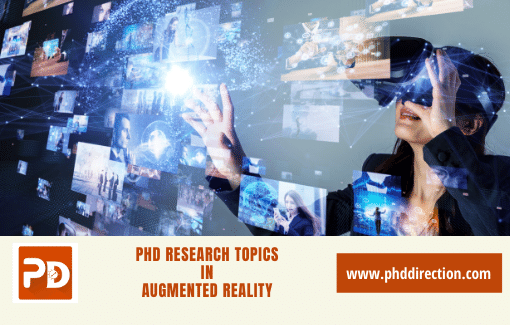
LEADING APPLICATIONS OF AUGMENTED REALITY
- Military, Defense and Emergency Training
- Robotics and Tele-Robotics
- STEM Education and also Training
- Art, Creativity and also Cultural Heritage
- Entertainment and also Sports Broadcast
- Automotive and also Aerospace
- Lifesaving System (Medical)
- Manufacturing and also Consumer Design
- Construction and also Architecture Model
- Hazard Detection
- Mobile and also Human Augmentation
PhD Research Topics in Augmented Reality will develop your research as vibrant as anything that existed so far. Our team has more skill to pick the optimal notion in augmented reality. Evidently, our experts will also go through all the recent updates. In general, our work will come in the standard journals.
MOST REPUTED RESEARCH JOURNALS
- Science Direct
- and also ACM
PhD Research Topics in Augmented Reality know that the lost time will never come back. That is why we work every tick with extra effort. Our team members will never waste your precious time.
PhD research is a beautiful ride; you will get the most phenomenal experience when you ride with us………
In the first place, our team will pinpoint the issues in your work. Next, we will plan the essential actions. At last, we will fulfill them without flaw for you. In the same way, you will also hold your degree without a doubt.
You can know more about this area if you look at the list given to you,
The novel design function for Augmented Reality Application aimed at Plant Learning scheme
An effectual function for Exploring Cultural Heritage in Augmented Reality with Energy Discovery
A creative mechanism for User-Based on Comparison of Two Augmented Reality Glasses system
An inventive method for Design and Calibration of an Augmented Reality Haploscope scheme
The new-fangled mechanism for Magestro based on Gamification of Data Collection Process designed for Development by Hand Gesture Recognition Technology
A fresh Research function based on Augmented Reality Extended Tracking Technology for Mobile Terminal
The firsthand process of Pervasive Rapid E-Preparedness Augmented Reality Environment E-Learning Intervention for HAZWOPER Training of Fire Fighter/EMTs system
Design and develop a new process of IoT Based Augmented Reality System of Human Heart by An Android Application
An innovative design method for Augmented Reality Application By using Graphic Code Markers system
An effectual process of Evaluation based Hand Gesture Annotation in Remote Collaboration Using Augmented Reality
On the use of Augmented Reality in Virtual, Augmented, and Mixed Reality designed for Human-Robot Interaction (VAM-HRI) scheme
The novel study Exploration of Augmented Reality Technology Applied in Colleges' Experimental Teaching system
An innovative method for Robot Supported in Virtual and Augmented Reality
An effective process of novel campus navigation APP with augmented reality and deep learning
A new mechanism for Approach augmented reality real-time rendering for understanding light and shade in art education
A novel source for SolarSystem of An augmented reality based on game with astronomical concepts
An effectual function of Automatic cell identification and visualization by digital holographic microscopy with head mounted augmented reality devices
An inventive mechanism for Mobile Edge Computing to Booster for Practical Provisioning Approach of Web-Based Augmented Reality system
An inventive method for Demonstration of augmented-reality optical narrowcasting scheme
An efficient method for Markerless Augmented Reality based Interior Designing System
An inventive method for Large Scale Information Marker Coding for Augmented Reality Using Graphic Code
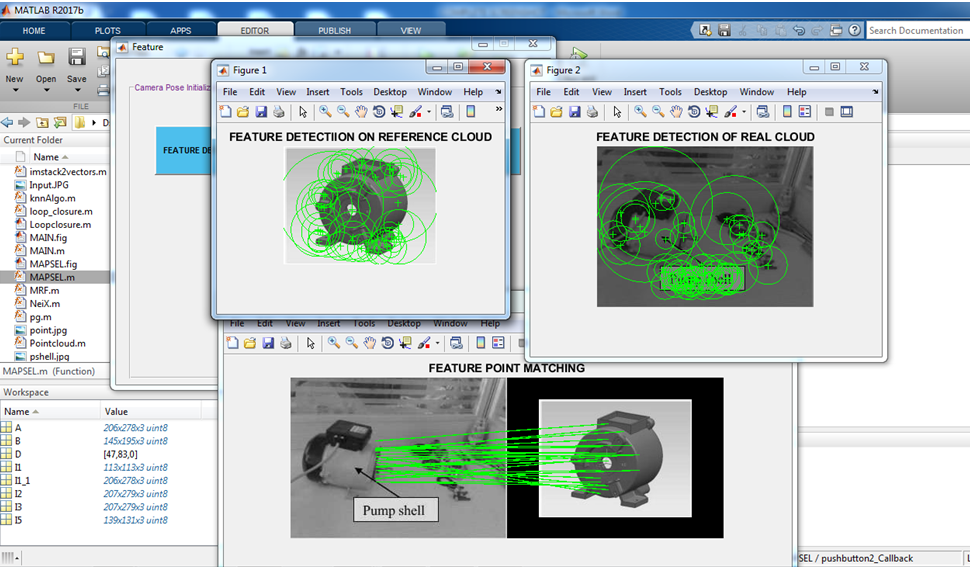
Why Work With Us ?
Senior research member, research experience, journal member, book publisher, research ethics, business ethics, valid references, explanations, paper publication, 9 big reasons to select us.
Our Editor-in-Chief has Website Ownership who control and deliver all aspects of PhD Direction to scholars and students and also keep the look to fully manage all our clients.
Our world-class certified experts have 18+years of experience in Research & Development programs (Industrial Research) who absolutely immersed as many scholars as possible in developing strong PhD research projects.
We associated with 200+reputed SCI and SCOPUS indexed journals (SJR ranking) for getting research work to be published in standard journals (Your first-choice journal).
PhDdirection.com is world’s largest book publishing platform that predominantly work subject-wise categories for scholars/students to assist their books writing and takes out into the University Library.
Our researchers provide required research ethics such as Confidentiality & Privacy, Novelty (valuable research), Plagiarism-Free, and Timely Delivery. Our customers have freedom to examine their current specific research activities.
Our organization take into consideration of customer satisfaction, online, offline support and professional works deliver since these are the actual inspiring business factors.
Solid works delivering by young qualified global research team. "References" is the key to evaluating works easier because we carefully assess scholars findings.
Detailed Videos, Readme files, Screenshots are provided for all research projects. We provide Teamviewer support and other online channels for project explanation.
Worthy journal publication is our main thing like IEEE, ACM, Springer, IET, Elsevier, etc. We substantially reduces scholars burden in publication side. We carry scholars from initial submission to final acceptance.
Related Pages
Phd Research Topics In Lte
Phd Research Topics In Ipv6
Phd Research Topics In It
Phd Research Topics In Iot Mqtt
Phd Research Topics In Ipv6 Network
Phd Research Topics In Lte Network
Phd Research Topics In Information Security
Phd Research Topics In Load Balancing Cloud
Phd Research Topics In Internet Computing
Phd Research Topics In Iot Internet Of Things
Phd Research Topics In Image Mining
Phd Research Topics In Information Technology
Phd Research Topics In Learning Technologies
Phd Research Topics In Iot Network Simulator
Phd Research Topics In Information Forensics Security
Our Benefits
Throughout reference, confidential agreement, research no way resale, plagiarism-free, publication guarantee, customize support, fair revisions, business professionalism, domains & tools, we generally use, wireless communication (4g lte, and 5g), ad hoc networks (vanet, manet, etc.), wireless sensor networks, software defined networks, network security, internet of things (mqtt, coap), internet of vehicles, cloud computing, fog computing, edge computing, mobile computing, mobile cloud computing, ubiquitous computing, digital image processing, medical image processing, pattern analysis and machine intelligence, geoscience and remote sensing, big data analytics, data mining, power electronics, web of things, digital forensics, natural language processing, automation systems, artificial intelligence, mininet 2.1.0, matlab (r2018b/r2019a), matlab and simulink, apache hadoop, apache spark mlib, apache mahout, apache flink, apache storm, apache cassandra, pig and hive, rapid miner, support 24/7, call us @ any time, +91 9444829042, [email protected].
Questions ?
Click here to chat with us
- Our Promise
- Our Achievements
- Our Mission
- Proposal Writing
- System Development
- Paper Writing
- Paper Publish
- Synopsis Writing
- Thesis Writing
- Assignments
- Survey Paper
- Conference Paper
- Journal Paper
- Empirical Paper
- Journal Support
PhD Projects in Augmented Reality
Augmented reality is a shared process that lays over the digital basics. Like sound, text, image, and visual effects, some of them serve as the basis. PhD projects in Augmented Reality give students the best service in augmented reality (AR).
Our hands-on pillars will build your cherry-picked prime ideas from augmented reality. We will give pleasure to care about your project at any rate. Also, we will help you to make your projects from the below cited or other trendy areas.
POPULAR TECHNIQUES/METHODS IMPLEMENTED
Interaction
- Freeze View Touch
- Zooming Interaction
3D Geo Visualize
- Mobile VR Interface
- Tangible AR Interface
- Campus Navigation System
- Transitional Augmented Reality Navigation
Positioning
- Indoor and Outdoor
- SlidAR and HoldAR
- Markerless AR
PhD projects in Augmented Reality remain a boon for every scholar to take off their project flight. Also, this is a chance to lively view the study ideas. We get strong hope while your input is with us for your project.
Feel Free to Approach Us, We are here to serve you at your desired time
PhD projects in Augmented Reality have well-run a huge mass of new project ideas. Our first-class aid starts with choosing the area and ends with the big shot. We fit in the novel Machine Learning (ML) and Deep Learning (DL) methods in your AR projects.
When our noble team efforts meet your mutual aid, then your feat is a sure thing. Our experts will prepare your project in such a way that it entices your examiner.
An effectual process of Inverse Augmented Reality based on Virtual Agent's Perspective system
A new function of Industrial Augmented Reality in Requirements for an Augmented Reality Maintenance Worker Support System
An effective performance for Addressing Occlusion Problem in Augmented Reality Environments with Phantom Hollow Objects
On effective method for Improving the Perceived Trust in Visually Embodied Alexa in Augmented Reality
Inventive method for Augmented Reality based on Remote Collaboration with Dense Reconstruction system
On the use of Localization Service by Sparse Visual Information Based on Recent Augmented Reality Platforms
An inventive method for Future Agriculture Farm Management by Augmented Reality
An effective design function of Augmenting Mixed Reality Applications with Vibro Motors Wearable system
An effective Explanatory Windshield Display Interface with Augmented Reality Features intended for Urban Autonomous Driving scheme
A new mechanism for Reproducing Material Appearance of Real Objects Via Mobile Augmented Reality
An effective method for TutAR in Semi-Automatic Generation of Augmented Reality for Medical Education
A novel mechanism for Reproducing Material Appearance of Real Objects By Mobile Augmented Reality
An effectual performance for Sharing and Augmenting Emotion in Collaborative Mixed Reality
An inventive method for Augmented Reality-Based on Personalized Virtual Operative Anatomy by Neurosurgical Guidance and Training system
An innovative method for Evaluation of Environment-Independent Techniques for three dimensional Position Marking in Augmented Reality
A modern mechanism for Hands-Free Interaction for Augmented Reality in Vascular Interventions
An innovative method for Understanding Thermal Flux Through Augmented Reality scheme
A new process of Viability based on Augmented Content intended for Field Policing system
An effectual function of Browsing Spatial Photography used by Augmented Models
An inventive method for Attention Guiding used by Augmented Reality in Complex Environments
MILESTONE 1: Research Proposal
Finalize journal (indexing).
Before sit down to research proposal writing, we need to decide exact journals. For e.g. SCI, SCI-E, ISI, SCOPUS.
Research Subject Selection
As a doctoral student, subject selection is a big problem. Phdservices.org has the team of world class experts who experience in assisting all subjects. When you decide to work in networking, we assign our experts in your specific area for assistance.
Research Topic Selection
We helping you with right and perfect topic selection, which sound interesting to the other fellows of your committee. For e.g. if your interest in networking, the research topic is VANET / MANET / any other
Literature Survey Writing
To ensure the novelty of research, we find research gaps in 50+ latest benchmark papers (IEEE, Springer, Elsevier, MDPI, Hindawi, etc.)
Case Study Writing
After literature survey, we get the main issue/problem that your research topic will aim to resolve and elegant writing support to identify relevance of the issue.
Problem Statement
Based on the research gaps finding and importance of your research, we conclude the appropriate and specific problem statement.

Writing Research Proposal
Writing a good research proposal has need of lot of time. We only span a few to cover all major aspects (reference papers collection, deficiency finding, drawing system architecture, highlights novelty)
MILESTONE 2: System Development
Fix implementation plan.
We prepare a clear project implementation plan that narrates your proposal in step-by step and it contains Software and OS specification. We recommend you very suitable tools/software that fit for your concept.
Tools/Plan Approval
We get the approval for implementation tool, software, programing language and finally implementation plan to start development process.
Pseudocode Description
Our source code is original since we write the code after pseudocodes, algorithm writing and mathematical equation derivations.
Develop Proposal Idea
We implement our novel idea in step-by-step process that given in implementation plan. We can help scholars in implementation.
Comparison/Experiments
We perform the comparison between proposed and existing schemes in both quantitative and qualitative manner since it is most crucial part of any journal paper.
Graphs, Results, Analysis Table
We evaluate and analyze the project results by plotting graphs, numerical results computation, and broader discussion of quantitative results in table.
Project Deliverables
For every project order, we deliver the following: reference papers, source codes screenshots, project video, installation and running procedures.
MILESTONE 3: Paper Writing
Choosing right format.
We intend to write a paper in customized layout. If you are interesting in any specific journal, we ready to support you. Otherwise we prepare in IEEE transaction level.
Collecting Reliable Resources
Before paper writing, we collect reliable resources such as 50+ journal papers, magazines, news, encyclopedia (books), benchmark datasets, and online resources.
Writing Rough Draft
We create an outline of a paper at first and then writing under each heading and sub-headings. It consists of novel idea and resources
Proofreading & Formatting
We must proofread and formatting a paper to fix typesetting errors, and avoiding misspelled words, misplaced punctuation marks, and so on
Native English Writing
We check the communication of a paper by rewriting with native English writers who accomplish their English literature in University of Oxford.
Scrutinizing Paper Quality
We examine the paper quality by top-experts who can easily fix the issues in journal paper writing and also confirm the level of journal paper (SCI, Scopus or Normal).
Plagiarism Checking
We at phdservices.org is 100% guarantee for original journal paper writing. We never use previously published works.
MILESTONE 4: Paper Publication
Finding apt journal.
We play crucial role in this step since this is very important for scholar’s future. Our experts will help you in choosing high Impact Factor (SJR) journals for publishing.
Lay Paper to Submit
We organize your paper for journal submission, which covers the preparation of Authors Biography, Cover Letter, Highlights of Novelty, and Suggested Reviewers.
Paper Submission
We upload paper with submit all prerequisites that are required in journal. We completely remove frustration in paper publishing.
Paper Status Tracking
We track your paper status and answering the questions raise before review process and also we giving you frequent updates for your paper received from journal.
Revising Paper Precisely
When we receive decision for revising paper, we get ready to prepare the point-point response to address all reviewers query and resubmit it to catch final acceptance.
Get Accept & e-Proofing
We receive final mail for acceptance confirmation letter and editors send e-proofing and licensing to ensure the originality.
Publishing Paper
Paper published in online and we inform you with paper title, authors information, journal name volume, issue number, page number, and DOI link
MILESTONE 5: Thesis Writing
Identifying university format.
We pay special attention for your thesis writing and our 100+ thesis writers are proficient and clear in writing thesis for all university formats.
Gathering Adequate Resources
We collect primary and adequate resources for writing well-structured thesis using published research articles, 150+ reputed reference papers, writing plan, and so on.
Writing Thesis (Preliminary)
We write thesis in chapter-by-chapter without any empirical mistakes and we completely provide plagiarism-free thesis.
Skimming & Reading
Skimming involve reading the thesis and looking abstract, conclusions, sections, & sub-sections, paragraphs, sentences & words and writing thesis chorological order of papers.
Fixing Crosscutting Issues
This step is tricky when write thesis by amateurs. Proofreading and formatting is made by our world class thesis writers who avoid verbose, and brainstorming for significant writing.
Organize Thesis Chapters
We organize thesis chapters by completing the following: elaborate chapter, structuring chapters, flow of writing, citations correction, etc.
Writing Thesis (Final Version)
We attention to details of importance of thesis contribution, well-illustrated literature review, sharp and broad results and discussion and relevant applications study.
How PhDservices.org deal with significant issues ?
1. novel ideas.
Novelty is essential for a PhD degree. Our experts are bringing quality of being novel ideas in the particular research area. It can be only determined by after thorough literature search (state-of-the-art works published in IEEE, Springer, Elsevier, ACM, ScienceDirect, Inderscience, and so on). SCI and SCOPUS journals reviewers and editors will always demand “Novelty” for each publishing work. Our experts have in-depth knowledge in all major and sub-research fields to introduce New Methods and Ideas. MAKING NOVEL IDEAS IS THE ONLY WAY OF WINNING PHD.
2. Plagiarism-Free
To improve the quality and originality of works, we are strictly avoiding plagiarism since plagiarism is not allowed and acceptable for any type journals (SCI, SCI-E, or Scopus) in editorial and reviewer point of view. We have software named as “Anti-Plagiarism Software” that examines the similarity score for documents with good accuracy. We consist of various plagiarism tools like Viper, Turnitin, Students and scholars can get your work in Zero Tolerance to Plagiarism. DONT WORRY ABOUT PHD, WE WILL TAKE CARE OF EVERYTHING.
3. Confidential Info
We intended to keep your personal and technical information in secret and it is a basic worry for all scholars.
- Technical Info: We never share your technical details to any other scholar since we know the importance of time and resources that are giving us by scholars.
- Personal Info: We restricted to access scholars personal details by our experts. Our organization leading team will have your basic and necessary info for scholars.
CONFIDENTIALITY AND PRIVACY OF INFORMATION HELD IS OF VITAL IMPORTANCE AT PHDSERVICES.ORG. WE HONEST FOR ALL CUSTOMERS.
4. Publication
Most of the PhD consultancy services will end their services in Paper Writing, but our PhDservices.org is different from others by giving guarantee for both paper writing and publication in reputed journals. With our 18+ year of experience in delivering PhD services, we meet all requirements of journals (reviewers, editors, and editor-in-chief) for rapid publications. From the beginning of paper writing, we lay our smart works. PUBLICATION IS A ROOT FOR PHD DEGREE. WE LIKE A FRUIT FOR GIVING SWEET FEELING FOR ALL SCHOLARS.
5. No Duplication
After completion of your work, it does not available in our library i.e. we erased after completion of your PhD work so we avoid of giving duplicate contents for scholars. This step makes our experts to bringing new ideas, applications, methodologies and algorithms. Our work is more standard, quality and universal. Everything we make it as a new for all scholars. INNOVATION IS THE ABILITY TO SEE THE ORIGINALITY. EXPLORATION IS OUR ENGINE THAT DRIVES INNOVATION SO LET’S ALL GO EXPLORING.
Client Reviews
I ordered a research proposal in the research area of Wireless Communications and it was as very good as I can catch it.
I had wishes to complete implementation using latest software/tools and I had no idea of where to order it. My friend suggested this place and it delivers what I expect.
It really good platform to get all PhD services and I have used it many times because of reasonable price, best customer services, and high quality.
My colleague recommended this service to me and I’m delighted their services. They guide me a lot and given worthy contents for my research paper.
I’m never disappointed at any kind of service. Till I’m work with professional writers and getting lot of opportunities.
- Christopher
Once I am entered this organization I was just felt relax because lots of my colleagues and family relations were suggested to use this service and I received best thesis writing.
I recommend phdservices.org. They have professional writers for all type of writing (proposal, paper, thesis, assignment) support at affordable price.
You guys did a great job saved more money and time. I will keep working with you and I recommend to others also.
These experts are fast, knowledgeable, and dedicated to work under a short deadline. I had get good conference paper in short span.
Guys! You are the great and real experts for paper writing since it exactly matches with my demand. I will approach again.
I am fully satisfied with thesis writing. Thank you for your faultless service and soon I come back again.
Trusted customer service that you offer for me. I don’t have any cons to say.
I was at the edge of my doctorate graduation since my thesis is totally unconnected chapters. You people did a magic and I get my complete thesis!!!
- Abdul Mohammed
Good family environment with collaboration, and lot of hardworking team who actually share their knowledge by offering PhD Services.
I enjoyed huge when working with PhD services. I was asked several questions about my system development and I had wondered of smooth, dedication and caring.
I had not provided any specific requirements for my proposal work, but you guys are very awesome because I’m received proper proposal. Thank you!
- Bhanuprasad
I was read my entire research proposal and I liked concept suits for my research issues. Thank you so much for your efforts.
- Ghulam Nabi
I am extremely happy with your project development support and source codes are easily understanding and executed.
Hi!!! You guys supported me a lot. Thank you and I am 100% satisfied with publication service.
- Abhimanyu
I had found this as a wonderful platform for scholars so I highly recommend this service to all. I ordered thesis proposal and they covered everything. Thank you so much!!!
Related Pages
Phd Projects In Ifogsim
Phd Projects In Audio Speech Language Processing
Phd Projects In Image Mining
Phd Projects In Computer Networking
Phd Research Topics In Image Processing
Phd Projects In Computer Graphics
Phd Projects In Electronics And Communication
Phd Research Topics In Data Mining
Phd Projects In Information Forensics Security
Phd Projects In Cybersecurity
Phd Projects In Electrical Matlab Simulink
Phd Projects In Information Security
Phd Projects In Cse
Phd Projects In Electrical Engineering
Phd Projects In Cryptography
PhD Guidance in Augmented Reality
PhD Guidance in Augmented Reality providing all stages of research recommendations globally for PhD research scholars. We offer complete support and guidance for PhD scholars in upcoming and latest technologies. Our augmented reality services include proposal and also thesis writing, research guidance, journal paper writing, journal paper publications, and also research assistance.
Our success story is also the brightest minds developers, most innovative research, world no.1 and leading company, and the developed projects in all the research fields in AR. With a bundle of enviable features, PhD augmented. Reality is what every other organization aspires to be innovative, novel, and original. To experience it, connect with team viewer to our experts or call us 24/7 in 365 days
Guidance in Augmented Reality
PhD Guidance in Augmented Reality is one of our best service providers that offer best guidance for all engineering students and research scholars. Our top experts revised the emerging technology and updated the current information to improve our knowledge and show our competitiveness. We are delighted to have researched scholars’ work and provide world class services to students and research scholars worldwide. We are fully committed to the vision of students and also scholar’s inclusion and research.
Let the world know, how curious we are,
Augmented reality for next generation technology.
- Tangible User Interface
- Voice user interface
- Brain computer interface
- Flexible OLED display
- Interact also with a real world environment
Augmented Reality for Advanced Concepts in Mobile Computing
- 3D visualization and also mapping
- Haptic /tactile technologies
- Gestural interfaces
- Screen less future
Augmented-Reality in IoT
- Evolved AR& VR business and also marketing solutions
- Making medical education interactive
- Visualizing Product Design
Augmented Reality in 5G networks
- Portable and also mobile device
- Natural user interface accessing
- Dynamic scenery versus AR realism
- Measurements also on Real MAR infrastructure
- Lightning and also weather conditions
- Integration also with location specific information
- Accessing field information also using ubiquitous services
Augmented-Reality for Smart phones platforms
- Texture-ness
- Inaccurate and also missing sensor information
- Camera quality and also handling
- Network dependency
- Visualization and also interaction possibilities
- Localization as an image recognition problem
- Energy consumption
Development tools and Software’s
- OpenSpace3D
- Aurasama Studio
Purpose of Tools and software’s
- ARtoolkit: Toolkit SDK that also used to keep track of library for develop real AR applications
- Vuforia: Complete SDK also for AR app development
- OpenSpace3D: Free and open source software also for augmented and virtual reality projects development
- InfinityAR: Development platform that used to 3D object tracking, real time position and orientation analysis, and also physical world digitization.
- Wikitude: AR-SDK toolkit in all in one that combines SLAM also based 3D tracking technology
- Aurasama Studio: Web based augmented reality development tool also used for application development
- BeyondAR: Open source augmented reality programming framework also for android to find an geo-location
- DRoidAR: Open source augmented reality programming framework for android that provides features for location and also marker based AR
- OpenCV: Tool to build for computational efficiency also with a robust concentrate on real time applications
- GeoAR: Geo location based open source browser also for android featuring location
- JAVACV: Java tool to offers wrappers also for OpenCV
Research Topics in Augmented-Reality
- 3D user Interaction
- Navigation and also visualization
- Handheld Augmented Reality
- Open challenges also on Augmented Reality
- Human cognitive processing
- Tracker registration and also calibration
- Computer processing hardware
- Interaction techniques
- Graphics Rendering
- Virtual reality also in medicine
- Information visualization
- Context awareness and also interaction design
- Security and privacy also in augmented reality
- Challenges of augmented reality
Pick the most precious /recent topic; you can also think of your knowledge with our experience. Share your own work and ideas with us and educate yourself through our exposure and peer reviews of research worldwide
Related Pages
Services we offer.
Mathematical proof
Pseudo code
Conference Paper
Research Proposal
System Design
Literature Survey
Data Collection
Thesis Writing
Data Analysis
Rough Draft
Paper Collection
Code and Programs
Paper Writing
Course Work
More From Forbes
Augmented reality is transforming user experiences.
- Share to Facebook
- Share to Twitter
- Share to Linkedin
Yasir is the Founder and CEO of Taazaa, Inc . He has decades of experience working with technology thought leaders across industries.
When Pokémon Go landed in 2016, it wasn’t just Pokémon that exploded—it was the whole concept of augmented reality (AR).
Pokémon Go turned the whole globe into a giant, interactive game board and catalyzed a surge in AR adoption, showcasing its mass appeal and accessibility. It elevated the public’s awareness and understanding of AR, sparking interest and curiosity in the technology’s potential applications. Almost overnight, AR shifted from a niche, experimental technology to a mainstream phenomenon.
It also opened the floodgates for investments and innovations in AR, with everyone keen to see what other magic could be conjured by blending digital with reality. AR has come a long way from the first primitive AR headset, “The Sword of Damocles,” created by Ivan Sutherland and his students in 1968.
The AR evolution has been led by the desire to bridge between the digital and physical worlds, seamlessly integrating virtual elements with our tangible environment. It’s the drive to transcend the physical world’s limitations and delve into a realm where imagination and reality coexist.
AR injects itself into human perception with visual augmentation, spatial sounds and haptic feedback. It superimposes these digital elements using the cameras and screens of devices like smartphones and smart glasses.
These devices employ advanced algorithms to accurately merge digital content with the physical world in real time, creating a cohesive and immersive interactive experience, thereby altering our engagement with our surroundings.
AR Hardware And Software
Since Sutherland’s first head-mounted device, innovation has come a long way. The evolution of simultaneous localization and mapping (SLAM) enabled marker-free, sophisticated AR experiences that could orient and align with the surrounding environment. The release of the open-source ARToolKit in 1999 helped create a developer community that could continue to innovate and expand the kind of experiences AR makes possible.
As detailed below, AR typically can be experienced in many forms.
Projection-Based AR
Projection-based AR displays virtual images on physical objects such as walls and building facades. Hidden sensors and cameras make the projected images interactive. This technology is sometimes referred to as spatial augmented reality (SAR) or projection mapping.
Phone-Based AR
Phone-based AR utilizes the camera and other sensors to overlay digital content onto the real world, as viewed through the device’s screen. Users typically hold the device to see and interact with the AR elements. Its widespread adoption stems from the ubiquity and convenience of smartphones, making it a popular choice for gaming, navigation and educational applications.
Wearable AR
Wearable AR, often through glasses or headsets like Microsoft’s HoloLens, provides a hands-free, immersive experience by integrating digital content directly into the user’s field of vision. Unlike phone-based AR, which requires manual interaction with a device, wearable AR allows for continuous, integrated AR interactions, making it especially beneficial for tasks requiring consistent engagement or when hands need to remain unoccupied. This direct integration often offers a more natural and engaging user experience compared to the handheld nature of phone-based AR.
Google Glass, Microsoft HoloLens, Apple Vision Pro and the corresponding software development kits (SDKs) like Apple’s ARKit and Google’s ARCore have made AR more accessible. At the same time, cloud-based AR has expanded its capabilities and efficiency. Together, these innovations have steered AR’s growth from a nascent concept to a transformative tool across various sectors.
Application Of AR
From immersive shopping experiences to enhanced productivity tools, AR is reshaping how companies interact with their audiences. Brands like Adidas, L’Oréal and even Gucci have leveraged AR to engage users and increase sales.
Custom AR applications can be found in restaurants, museums, hair salons, newspapers, retail settings and more. One of the most well-known uses of AR is 19 Crimes wine , which used the technology to create “living labels” for their bottles.
But AR has far more power to heighten the user experience, creating new engagement opportunities for businesses in any industry.
Advances in AR are helping surgeons perform complex surgeries . The technology helps reduce post-surgical pain and complications for patients. Surgeons can see where all the critical structures are through the augmented view, even through intervening bone and soft tissue.
E-Commerce And Retail
AR has helped the retail industry make online shopping experiences more immersive. Customers can virtually try on clothes, accessories and even makeup before purchasing. Ikea uses AR to show customers how Ikea furniture will look in their homes.
Education And Training
By enabling students and trainees to absorb information actively, AR helps improve retention and skill development. Medical students can practice surgery on virtual patients, engineers can simulate and troubleshoot machinery, and language learners can engage in interactive conversations with virtual characters.
Event And Destination Enhancement
Vacation destinations and tourism boards are using AR to give potential visitors a better way to see what their location offers. Museums and event spaces use AR to bring their artwork and exhibits to life.
Real Estate And Architecture
In the real estate and architecture sectors, AR is changing how properties are showcased and designed. Potential buyers can take virtual tours of properties, visualize renovations and explore architectural plans before breaking ground.
Gaming And Entertainment
Dozens of games use AR as a core feature, but by far, the most popular is Pokémon Go. Millions of people of all ages play it. AR games motivate people to exercise by making it fun, and many include microtransactions that act as a revenue stream for the game’s creator.
Adding AR To Your Business
Despite the prevalence of augmented reality solutions, it’s still a new and underused technology. More groundbreaking AR applications are just around the corner.
For companies interested in pursuing AR applications, begin by assessing your specific business needs and objectives. Identify areas where AR could enhance customer engagement, improve processes or create new revenue streams. Be sure to consider whether phone-based, wearable or projection-based AR is more suitable for your goals.
Furthermore, consider reaching out to organizations that have successfully integrated AR into their operations, as case studies and real-world examples can provide valuable insights. Augmented reality can increase customer engagement, attract new users and create new revenue streams, but carefully weigh the costs versus the benefits before committing to a development path.
Forbes Technology Council is an invitation-only community for world-class CIOs, CTOs and technology executives. Do I qualify?

- Editorial Standards
- Reprints & Permissions
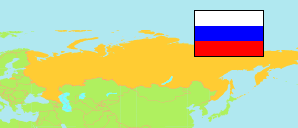
Get the Reddit app
The New Order: Last Days of Europe is an ambitious mod for Hearts of Iron IV presenting a unique alternate history Cold War between Germany, Japan and the USA, starting in 1962. Will you save the world or help destroy it?
A Preview of OMSK content coming in Battle on the Ice! (Brave New World)
By continuing, you agree to our User Agreement and acknowledge that you understand the Privacy Policy .
Enter the 6-digit code from your authenticator app
You’ve set up two-factor authentication for this account.
Enter a 6-digit backup code
Create your username and password.
Reddit is anonymous, so your username is what you’ll go by here. Choose wisely—because once you get a name, you can’t change it.
Reset your password
Enter your email address or username and we’ll send you a link to reset your password
Check your inbox
An email with a link to reset your password was sent to the email address associated with your account
Choose a Reddit account to continue
Best Barbecue Restaurants in Omsk, Omsk Oblast
Bbq restaurants in omsk, establishment type, traveler rating, dietary restrictions, restaurant features.

We have 21 augmented reality PhD Research Projects PhD Projects, Programmes & Scholarships
All disciplines
All locations
Institution
All Institutions
PhD Research Projects
All Funding
augmented reality PhD Research Projects PhD Projects, Programmes & Scholarships
Audio for virtual and augmented reality, phd research project.
PhD Research Projects are advertised opportunities to examine a pre-defined topic or answer a stated research question. Some projects may also provide scope for you to propose your own ideas and approaches.
Self-Funded PhD Students Only
This project does not have funding attached. You will need to have your own means of paying fees and living costs and / or seek separate funding from student finance, charities or trusts.
Spatial Analysis and Augmented Reality
Funded phd project (students worldwide).
This project has funding attached, subject to eligibility criteria. Applications for the project are welcome from all suitably qualified candidates, but its funding may be restricted to a limited set of nationalities. You should check the project and department details for more information.
Augmented Audio Soundscape Design for Enhanced Experiences
Asynchronous virtual reality, gesture-agnostic radar-based hand tracking for vr/ar systems, funded phd project (european/uk students only).
This project has funding attached for UK and EU students, though the amount may depend on your nationality. Non-EU students may still be able to apply for the project provided they can find separate funding. You should check the project and department details for more information.
Learning procedural knowledge through human-AI interaction
Funded phd project (uk students only).
This research project has funding attached. It is only available to UK citizens or those who have been resident in the UK for a period of 3 years or more. Some projects, which are funded by charities or by the universities themselves may have more stringent restrictions.
Enhancing Video Quality Assessment for 6G Networks: Leveraging Low Latency, High Data Rates, and Massive Connectivity for Improved User Experience
Human computer interaction, enhancing real estate transactions through the metaverse: focus on property tours and design visualization, virtual engagement: the impact of avatars on metaverse retailing, computational acoustics: predicting, simulating and/or auralising how the world sounds, fully–funded phd studentship with the optical networks group, department of electronic & electrical engineering, ucl, user-centred assistance control in physical human-robot collaboration: a predictive model-based approach, phd in cyber-physical systems for medicine development and manufacturing, competition funded phd project (students worldwide).
This project is in competition for funding with other projects. Usually the project which receives the best applicant will be successful. Unsuccessful projects may still go ahead as self-funded opportunities. Applications for the project are welcome from all suitably qualified candidates, but potential funding may be restricted to a limited set of nationalities. You should check the project and department details for more information.
FindAPhD. Copyright 2005-2024 All rights reserved.
Unknown ( change )
Have you got time to answer some quick questions about PhD study?
Select your nearest city
You haven’t completed your profile yet. To get the most out of FindAPhD, finish your profile and receive these benefits:
- Monthly chance to win one of ten £10 Amazon vouchers ; winners will be notified every month.*
- The latest PhD projects delivered straight to your inbox
- Access to our £6,000 scholarship competition
- Weekly newsletter with funding opportunities, research proposal tips and much more
- Early access to our physical and virtual postgraduate study fairs
Or begin browsing FindAPhD.com
or begin browsing FindAPhD.com
*Offer only available for the duration of your active subscription, and subject to change. You MUST claim your prize within 72 hours, if not we will redraw.

Do you want hassle-free information and advice?
Create your FindAPhD account and sign up to our newsletter:
- Find out about funding opportunities and application tips
- Receive weekly advice, student stories and the latest PhD news
- Hear about our upcoming study fairs
- Save your favourite projects, track enquiries and get personalised subject updates

Create your account
Looking to list your PhD opportunities? Log in here .
Filtering Results

IMAGES
COMMENTS
Our NSF-funded program on Interdisciplinary Graduate Training in the Science, Technology, and Applications of Augmented and Virtual Reality (AR/VR) is a structured, multi-disciplinary PhD training program on AR/VR. This NSF Research Traineeship (NRT) program admits PhD students from multiple University of Rochester departments including:
In 2020, the Metaverse was valued globally at US$487 billion, encompassing gaming, social media, live entertainment, and gaming/Virtual reality (VR)/Augmented reality (AR) (Bloomberg, 2021), with projections to exceed US$1 trillion by 2030 (Bloomberg, 2022; Precedence Research, 2022). Read more. Supervisors: Dr A Ueno, Dr R Trivedi, Dr SMF ...
The CCSE also has a CSE PhD program, offered jointly with eight participating departments. The program focuses on the "development of new computational methods relevant to science and engineering disciplines." ... The Virtual and Augmented Reality Lab (VR) in the College of Engineering's Edward P. Fitts Department of Industrial and ...
IVAI PhD internship scholarship. , and deployment of artificial intelligence, machine learning, virtual/ augmented reality, and data analytics technologies. IVAI is currently working on research projects related to applications in Cyber. Enter an email to receive alerts for augmented-reality positions.
Augmented and Virtual Reality; Augmented and Virtual Reality Overview. Our NSF-funded program on Interdisciplinary Graduate Training in the Science, Technology, and Applications of Augmented and Virtual Reality (AR/VR) is a structured, multi-disciplinary PhD training program on AR/VR.
The Virtual Reality and Augmented Reality program from MIT xPRO provides a foundational understanding and conversational fluency in the principles of XR technologies, an umbrella term that includes AR, VR, and MR. ... PhD, Director of the MIT Center for Advanced Virtuality; Professor of Digital Media and AI at MIT. Program Topics. 1.
The transdisciplinary nature of this program allows them to connect electrical engineering signals and systems constructs to multimedia computing, digital communication, immersive augmented reality and virtual reality experiences and data visualization. Career examples include: augmented and virtual reality researcher; computer systems engineer
interdisciplinary PhD training program in the science, technology, and applications of Augmented and Virtual Reality (AR/VR). Our Mission & Vision Train a new cohort of PhD students with a unique set of competencies in the AR/VR domain that cannot be attained through existing traditional graduate programs.
The Allen School, which introduced the world's first augmented reality capstone course in 2016, offers a BS in Computer Science (CS), a Combined BS/MS in CS also known as the Fifth Year Master's Program, a Professional Master's (PMP) in CS, and a PhD in CS.
Md is a doctoral student at the Warner School of Education. Research interest: Md Mamunur has been captivated by the transformative potential of Augmented Reality (AR) and Virtual Reality (VR) since his first encounter with immersive technologies during his Fulbright program at NYU in 2017‐2018. While attending a course at Studio 20: Digital ...
The Google Augmented Reality team is a diverse group of experts tasked with building the foundations for great immersive computing and building helpful, delightful user experiences. We're focused on making immersive computing accessible to billions of people through mobile devices, and our scope continues to grow and evolve.
The Computing and Audio Research Lab at the University of Sydney, Australia has a fully-funded PhD position open in augmented reality for the visually impaired, in partnership with ARIA LLC. Applicants with a strong background in Psychoacoustics, Computer Science, Software Engineering or similar programs are encouraged to apply.
Carolin Reichherzer, PhD. Hi, I'm Carolin! I'm a Research Scientist in all things AR/VR. ... SecondSight: Demonstrating Cross-Device Augmented Reality. In Special Interest Group on Computer Graphics and Interactive Techniques Conference Immersive Pavilion (SIGGRAPH '21 Immersive Pavilion), August 09-13, 2021, Virtual Event, USA. ACM, New York ...
The Robotic Imaging Lab at the University of Sydney, Australia has a fully funded PhD position open in augmented reality for the visually impaired, in partnership with ARIA LLC. Applicants with a strong background in Mechatronic, Electrical, or Computer Engineering, Computer Science, or similar programs are encouraged to apply.
Recent advances in virtual reality technologies accelerate the immersive interaction between human and augmented 3D virtual worlds. Here, the authors discuss olfactory feedback technologies that ...
Cognitive Science PhD. Rochester Institute of Technology USA NTID Space Research Center. RIT's Cognitive Science Ph.D. provides an interdisciplinary study of the human mind that combines insights from psychology, computer science, linguistics, neuroscience, augmented reality, and philosophy. Read more.
PhD Research Topics in Augmented Reality. PhD Research Topics in Augmented Reality will make your mind to stay calm and feel the crux of your success. "Augmented Reality connects the real world with virtual components. That is, it will enrich the thinking ability of the computer. Also, it exists through mobile display and other wearable ...
Augmented reality is a shared process that lays over the digital basics. Like sound, text, image, and visual effects, some of them serve as the basis. PhD projects in Augmented Reality give students the best service in augmented reality (AR). Our hands-on pillars will build your cherry-picked prime ideas from augmented reality.
Guidance in Augmented Reality PhD Guidance in Augmented Reality is one of our best service providers that offer best guidance for all engineering students and research scholars. Our top experts revised the emerging technology and updated the current information to improve our knowledge and show our competitiveness. We are delighted to have ...
Augmented reality can increase customer engagement, attract new users and create new revenue streams, but carefully weigh the costs versus the benefits before committing to a development path.
As the name suggests, Pikachu Ph.D. is dressed in doctor's clothes, namely a lab coat and cute spiral glasses. But to add it to your Pokédex, you will have to put in significant effort.
Contents: Cities and Settlements The population of all cities and urban settlements in Omsk Oblast according to census results and latest official estimates. The icon links to further information about a selected place including its population structure (gender).
The Russian TNO Compass finally, but kinda explained. Need correction. : r/TNOmod. Go to TNOmod. r/TNOmod. r/TNOmod. The New Order: Last Days of Europe is an ambitious mod for Hearts of Iron IV presenting a unique alternate history Cold War between Germany, Japan and the USA, starting in 1962.
With the exception of the residents of Omsk, who were exposed to Black League propaganda for years, the majority of the League enforcers are gonna be your average TNO Russian - bitter at resentful and the misery of their surroundings, raised in the chaos and destitution of near-apocalyptic remains of a dead country.
Best Late Night BBQ Restaurants in Omsk, Russia. Find 6,840 traveler reviews of THE BEST Omsk Late Night BBQ Restaurants and search by price, location and more.
Research Group: School of Management. In 2020, the Metaverse was valued globally at US$487 billion, encompassing gaming, social media, live entertainment, and gaming/Virtual reality (VR)/Augmented reality (AR) (Bloomberg, 2021), with projections to exceed US$1 trillion by 2030 (Bloomberg, 2022; Precedence Research, 2022). Read more.